Meat Industry Association conference P10

More cuts to rural post P13


Meat Industry Association conference P10

More cuts to rural post P13



The latest Federated Farmers survey shows that after a slight rise in January, sentiment has dropped, frustrating industry leaders. Read full story,P6.

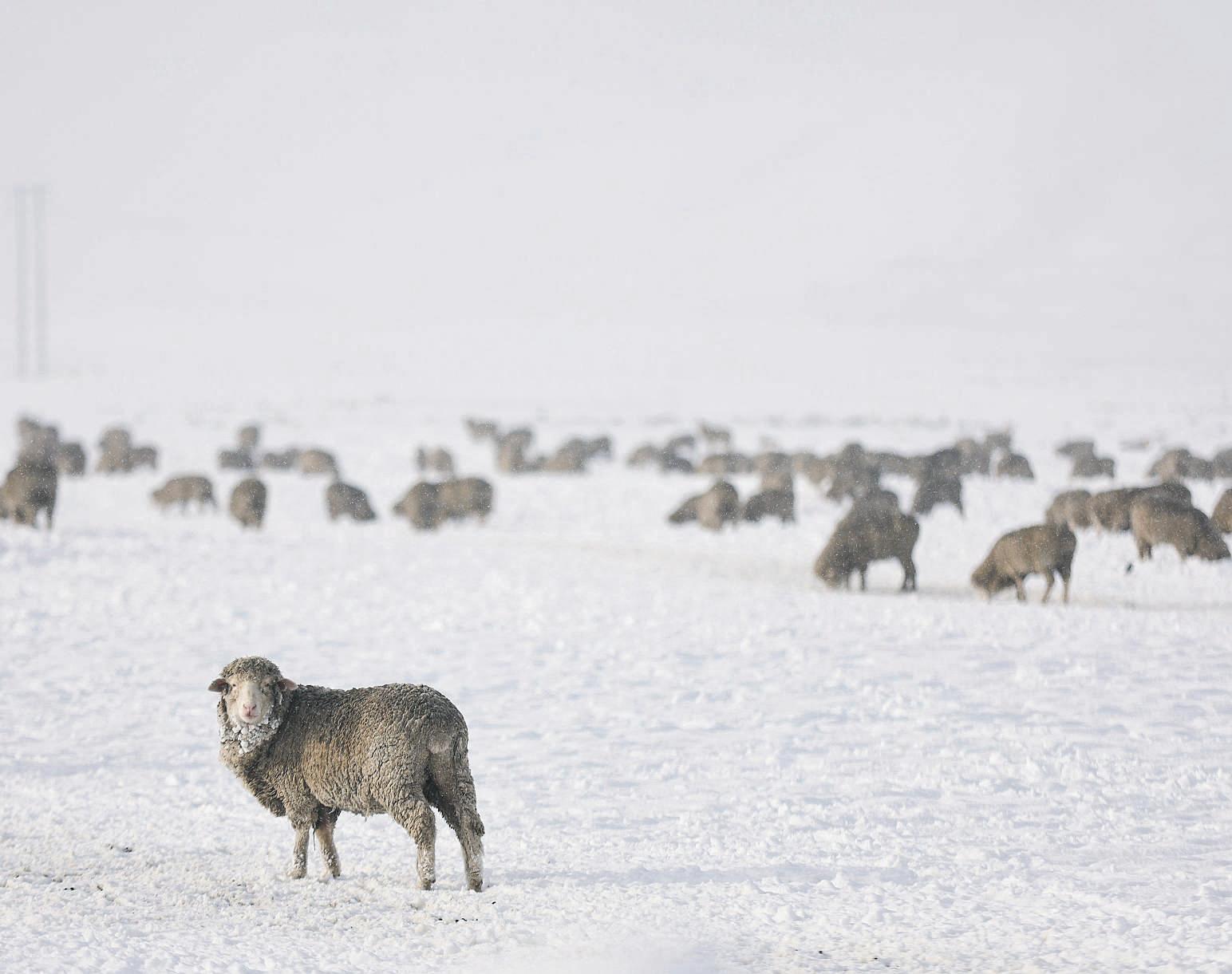




NZ’SINDUSTRIAL SUPPLY SPECIALISTS
Don’t miss the latest issueofCALIPERMagazine! For26years, it’s been the go-toresourcefor professionalslikeyou,connecting youtothe best brands and prices in NZ. Register nowfor your FREE copy andgear up forsuccess!

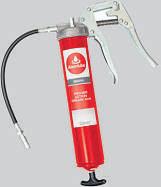
Readthe latest copy o







What areyour cowsmissing?
Revitalise your herd with aprecise mixof pelletisedmineralsand supplementsthatare easy to feed in-shed, 100% utilisable (withzero waste) withoutwasting anotherhourdusting.
Theycan’t tell you, buttheywillshowyou what Vitalise adds to theirhealthand production. 0508678 464
cplimesolutions.net.nz/vitalise




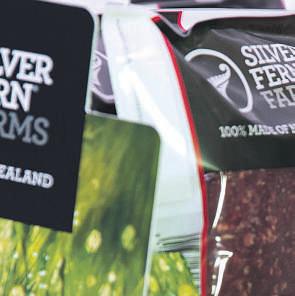
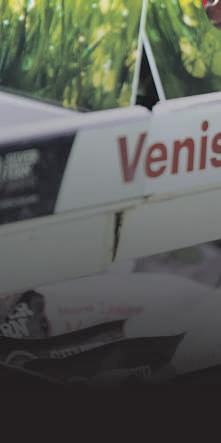
A retail accelerator project aims to build resilience for the New Zealand deer industry.
By Madeleine Powers.
Venison is set to hit North American retailers, with New Zealand’s deer industry securing funding for its North American retail accelerator project.
The industry launched its North American Retail Accelerator project on July 1 after Ministry for Primary Industries (MPI) approved the Deer Industry New Zealand’s (DINZ) funding application under the Sustainable Food and Fibre Futures (SFF Futures) programme.
DINZ chief executive Rhys Griffiths
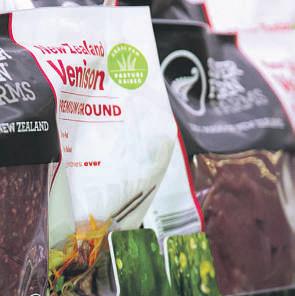
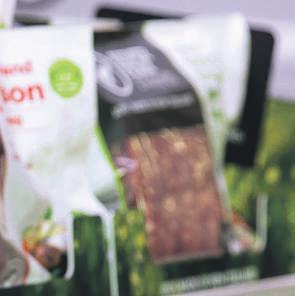

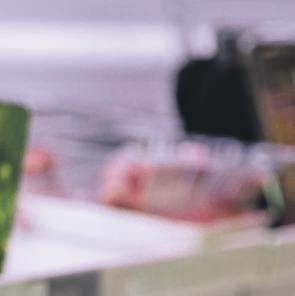



said the project aimed to build resilience into the industry, which had been overly reliant on the food service sector.
Griffiths said the industry was hit particularly hard when restaurants closed overnight during the Covid pandemic.
Companies started selling venison products in North American retail stores during the pandemic, but now that there was proof of concept, the project intended to boost that retail market.

Griffiths said building relationships with North American retailers and enabling consumers to buy venison directly from stores and online would build resilience in the industry, and boost demand for venison products.
Griffiths said venison exporters were missing out on direct consumer feedback, and the programme would allow exporters to change their products to meet consumer preferences, such as cuts of meat.



“A closer connection to the market is always a good thing, on so many fronts,” said Griffiths.
Mark McCoard, chairperson of the




Deer Farmers Association, said it was great news that the industry was looking to diversify into other markets, and diversity would help provide resilience in the future. On-farm costs were tough for farmers, and given a significant portion of farmer levy fees were going into the project, they would be happy to see the returns on their investment. Farmer levy fees to DINZ make up part of the investment in the project. It is forecast to deliver an initial return of $20 million, a four-to-one return of investment.
MPI will be contributing a third of the $4.9m investment to the project, with five venison exporters and DINZ making up the other two-thirds.
The SFF Futures North American Retail Accelerator includes all five New Zealand venison-processing companies: Alliance Group; Silver Fern Farms; First Light Foods; Duncan; and Mountain River Venison.


Waikato
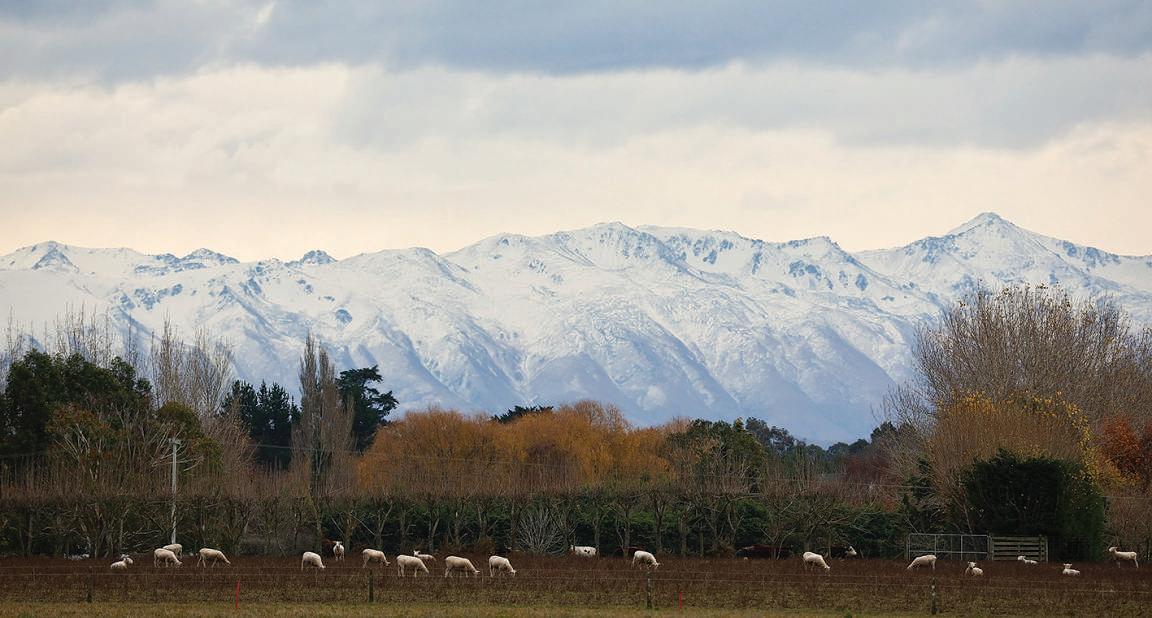
Sonita Chandar
027 446 6221 sonita.chandar@stuff.co.nz
Kwok Yi Lee
Sam Davenport COVER
Aiman Amerul Muner/Timaru Herald
HEAD OF REGIONAL & RURAL MARKETS
Kate Boreham 021 279 5361 kate.boreham@stuff.co.nz
Sonita Chandar EDITOR
can clearly recall attending a field day about this time last year where farmers were down in the dumps and it showed on their faces and in conversations. Never-ending changes to rules and regulations and increasing costs were just some of the main factors.
Then came the general election in October and they perked up considerably with the change of government which signalled a new direction in rural policies.
And since then, the National coalition Government has done, or is in the process of doing, what it said it would do in the leadup to the election.
In January 2024, the bi-annual Federated Farmers confidence survey showed a rise in the mood of farmers after hitting record lows in 2023.
But six months on, the latest survey of 1400 farmers shows confidence has slipped slightly and remains stubbornly low.
What is on our farmers’ minds?
It’s the same thing that keeps most people awake at night – debt, interest and banks.
It is once again the number one concern for farmers.
The survey showed a third of farmers will make a loss this season and more than half are expecting profitability to drop in the coming year.
But hopefully we will see this start to ease with several banks dropping their lending rates ahead of this week’s official cash rate announcement.
Economists are predicting rate cuts and banks say interest rates could drop by 2%.
This is good news for borrowers and farmers desperately wanting rate cuts. Inflation is also coming down and expected to be below 3% soon.
Farmgate and commodity prices remained the second most common concern with international prices for dairy and meat both down for the year.
This has flowed through to farmgate incomes, hitting farmers in the pocket.
Another not surprising concern was the ability to recruit staff that are not only skilled but motivated to work.
Recent changes to the Accredited Employer Work Visa scheme have not helped and instead have caused a number of issues in farmers’ ability to recruit, with many saying it is now harder to recruit staff.
But one of the most concerning issues is the number of farmers whose mental health and wellbeing is being affected because of economic conditions, weather, policy issues or other forms of pressure. Overall, 50% of respondents answered ‘yes’ (down 2 points from January 2024), 38% answered ‘no’ (up 3 points), and 13% were ‘unsure’ (similar).
What many don’t realise is when this is the case, effects flow on to the community as well as the economy.
It has been shown that farmers tend to close their wallets and cut back on spending.
Farm spending is back into negative territory. Net predictions of expected farm spending have dropped 4% in January down to -3%, a 7-point drop in the July survey.
And with 69% of farmers considering the current economic conditions to be ‘bad’, sector leaders will have their work cut out for them to restore famer confidence but say they are committed to ensuring confidence is lifted in the coming months. Sector
leaders say they are confident in turnaround in the markets and plenty of work is being done behind the scenes.
A Manawatū farmer put it best and accurately. “Every farmer, whether they be in sheep and beef, arable, horticulture or dairy or whatever, knows that farming is cyclical and always has been.
‘‘Markets go up, prices go up hence income goes up, and the mood and confidence of farmers goes up.
“Then markets go down and so does our income and everyone is not so chipper.
‘‘It has been happening for decades.
‘‘My parents saw it happen time and again, I’ve seen it happen and my children will also experience it.
‘‘That is the nature of farming.”
Hopefully the results of the next survey in January 2025 will reflect a better mood among our farming communities.
After historic low levels in confidence, the only way is up.
Get in touch with us at nzfarmer@stuff.co.nz

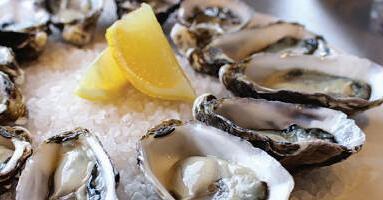







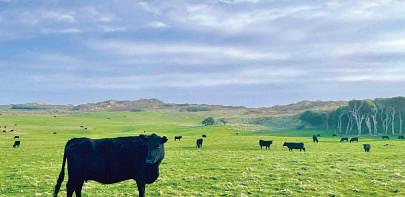






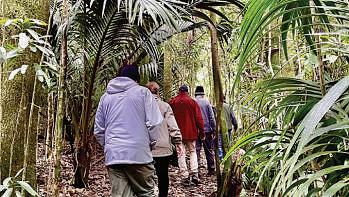





South Africa has better roads. Regarding your editorial in the July issue of NZ Farmer, I share your frustration with the state of New Zealand roads!
The “plastic pavement” you referred to as being used in Singapore does not contain “plastic” as we think of plastic in the modern age (polythene, polyester, pvc etc). It is “plastic” as in pliant or supple. If you heat steel, it becomes plastic shortly before it gets so hot that it melts.
The “flexible pavement” we have in New Zealand is, in fact,very similar to the stuff they use in Singapore. Quite why theirs works and ours is failing I don’t know,
although obviously they have a lot more people per km of road to fund works
I recently spent three weeks in South Africa and the roads there are a great example of what can be: the toll roads are 99.9% perfect
The secondary roads range from nearperfect to pothole-infested nightmares. The rural minor roads have had no gravel since 1994 and might see a grader once every two years if they are lucky, so they are rocky 30kph vehicle-destroyers, impassable when wet. The South African experience serves to emphasise the importance of maintaining what we have here. Keep up the good work
Julian Price, Oamaru

First off, we are supporters of NZ Farmer and great to have it back in the postbox, but... the idea that New Zealand emulate Singapore in the development of its roading network deftly leaves out the primary reason for the quality of Singapore’s roads – taxation. Maybe your next article on roading should expand a bit on the actual costs to drivers in Singapore ?
The vehicles are taxed, the drivers are taxed, and there are tolls and other
charges. I suggest most NZ Farmer readers have no actual idea what it costs to fund a proper roading network.
Singapore has something like 5.5 million people it’s just they recognise roads don’t come for free.
To run a similar system in New Zealand, we would have to increase fees to larger trucks massively and the whinging truckies would struggle to accept it
You see the damage to the New
Zealand highway system is not being done by your average car or SUV If you took every heavy truck off the road, and then fixed the potholes etc, the network would be fine because the road surfacing used here is easily strong enough to put up with the average wear and tear.
Northland Chamber of Commerce says it’s willing to work with all stakeholders – what it should be doing is specifically identifying how the damage is occurring, and charging those vehicles that do said



damage. Instead, what we have in your paper is the same old truckie/farmer moaning, without the recognition of where the fault lies.
A couple of pages on in NZ Farmer you have a headline Export earnings from agriculture set to increase Maybe some of those new profits should be diverted into public infrastructure used by farmers to transport products using heavy vehicles which damage roads?
Glenda Smith





Sentiment has dropped slightly since Federated Farmers undertook its January confidence survey, reports Sonita Chandar.
After farmer confidence hit rock bottom last year with record lows, it rose slightly in the January 2024 Federated Farmers New-Season Farm Confidence survey, which is undertaken twice a year. However, the recently released July 2024 survey showed a small drop in confidence since the beginning of the year.
These surveys measure farmer confidence over key issues in the farming profession and community.
The online survey carried out in mid-July of 1400 dairy, sheep, beef and arable farmers shows the results are disappointing, especially coming on the back of the slight lift in January.
‘‘It’s incredibly frustrating to see farmer confidence is still sitting at these stubbornly low levels,” Federated Farmers national president Wayne Langford says.
‘‘Unfortunately, these survey results are just reflecting how farming families are truly feeling out there at the moment.”
The key findings of the survey showed 69% of farmers consider the current economic conditions to be ‘bad’ compared to January – an 11-point deterioration. This is the second-lowest figure recorded in the survey’s history, the lowest being July 2023.
The greatest issue for farmers now is finance – including debt, interest and banks – which again topped the list of their concerns, with one-third of all farmers currently making a loss Only 27% say they’re making a profit and 39% are
breaking even
‘‘If that’s not bad enough, more than half of farmers expect their profitability to decline over the next 12 months.’’
Mortgage and overdraft interest rates remain stubbornly high with lending conditions also continuing to be strict, which is adding to farmers’ financial pressure.
Overall, farm debt has remained steady this year, aligning with the Reserve Bank of New Zealand’s record of total agriculture debt, which has been stable at $62 billion since May 2023.
About 44% of farmers expect their debt to remain unchanged, 23% anticipate a reduction in their debt over the next 12 months, and another 23% expect their debt to increase.
Only dairy production had a reduction in their net debt, which has remained at about $36b since May 2022, according to RBNZ data Meanwhile, meat and wool loans expect to remain about the same at $15.5b –the same since May 2022.
‘‘Farmers have really been doing it tough for some time now, with high interest rates, low commodity prices and sky-high input costs making it really hard to earn a living,’’ Langford says.
‘‘Farmers will also be watching interest rates closely and desperately hoping for a rate cut later this year to help relieve some of the pressure they’re feeling.’’
Langford says finance is consistently coming through as the main issue for farmers, which is why the Feds have pushed for an independent inquiry into rural banking.
“While it is great the Government have given the inquiry the green light, farmers actually want to see action and for changes to be made to the system.’’
Farmgate and commodity prices remained the second most common concern and remained the same as January at 16%. As in January, it was the top concern

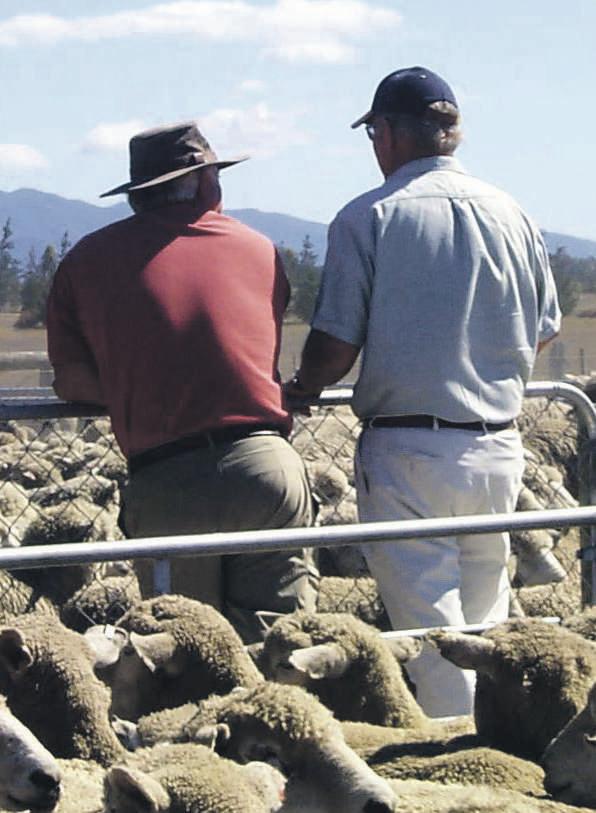
In the latest Federated Farmers confidence survey, 69% of respondents said they considered the current economic conditions to be ‘bad’ – an 11-point deterioration from January.
Main:Regulation and compliance costs are high on the list of concerns There have been a plethora of new or tougher regulations in recent years, but the new Government has promised to reduce the burden.
Right:Financeonceagaintopped thelistofconcerns Farmgateand commoditypricescamesecond, withlowreturnshittingfarmersin thewallet





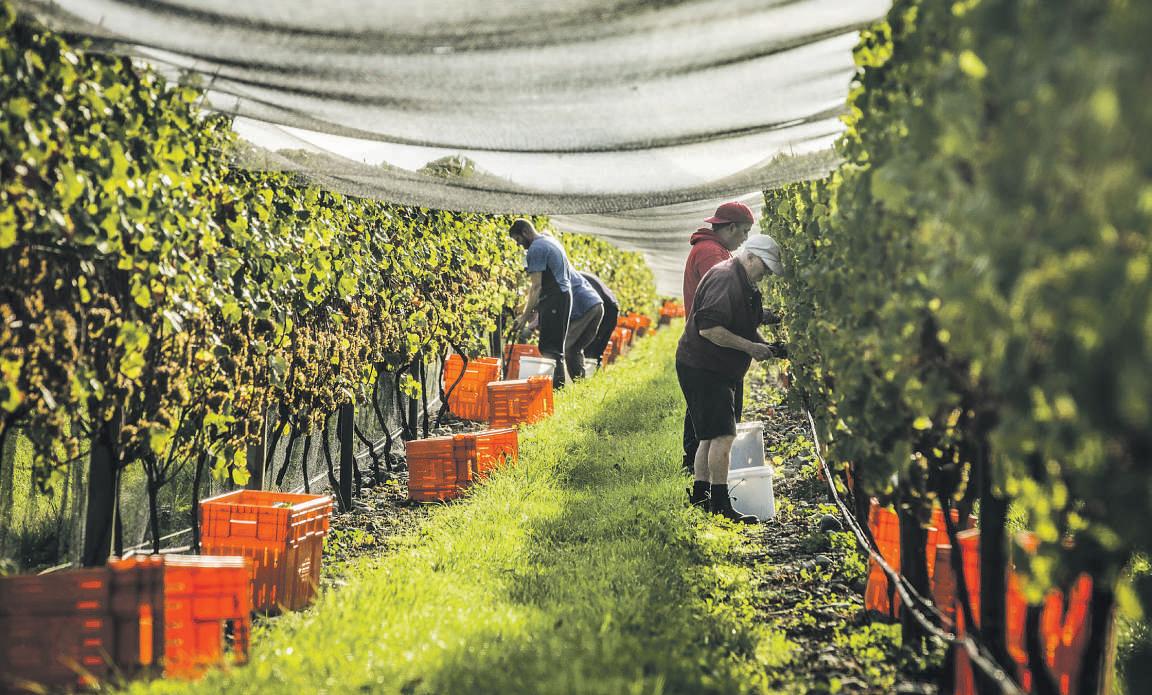
for meat and wool and arable farmers as returns remained stubbornly low in these sectors.
International prices for dairy and meat are both down for the year and this has flowed through to farmgate incomes.
Regulation and compliance costs are a ‘catch-all’ for many different issues across a spectrum that includes the environment, employment and health and safety Industry-specific regulations were the next greatest concern, but remained at the same level as January on 16%.
There have been a plethora of new or tougher regulations in recent years, but the new Government has promised to reduce the burden.
‘‘The Government has done a lot of work repealing and rewriting some of the most unworkable regulations, but there’s still so much more to be done,’’ Langford says.
Input costs rose from fifth to fourth place Although general economic inflation has eased somewhat, on-farm, inflation
remains high, particularly in fuel and fertiliser prices.
Concerns about the economic situation moved down from sixth to fifth place, while worries about the political situation decreased after the election. Local government and rates concerns climbed from 10th to sixth place, indicating growing frustration with local decision-making an cost drivers on farms.

After having a high profile during 2022, the pricing of agricultural emissions went quiet in 2023 and the Government has said it will push the issue out even further. Climate change policy and the Emissions Trading Scheme (ETS) dropped from fourth to seventh place.

says. “It’s concerning that farmers are finding it much harder to recruit skilled and motivated staff over the past six months than the previous six months.
“It’s nearing crisis point this season, with recent changes to the Accredited Employer Work Visa scheme causing all kinds of issues.”
The January 2023 survey asked for the first time whether mental health and wellbeing was being affected considering economic conditions, weather, policy issues or other forms of pressure. The question was also asked in this survey.
Overall, 50% of respondents answered ‘yes’ (down 2 points from January 2024), 38% answered ‘no’ (up 3 points), and 13% were ‘unsure’ (similar).
Langford says he’s deeply concerned for farmers’ wellbeing and what this might mean for their families, rural communities and the wider New Zealand economy.
“In this July survey, about half of farmers told us their mental health and wellbeing is being affected by worries about things like interest, farmgate prices and regulation.
“We want to see farmers thriving and feeling confident, not lying in bed stressing about how to pay their bills and keep the lights on.
“When farmers lose confidence, they cut their spending and shave costs from their business, and that has major flow-on effects for the wider economy.’’
Farmers continued to report difficulty recruiting skilled and motivated staff over the previous six months, but the net score fell, as it did in January 2023.
This was on the back of a drop in those feeling it had en harder. There was only a small increase in those thinking it had been easier. Farmers say this is the hardest time to recruit skilled and motivated staff in more than a decade, with the ability to recruit now sitting at the lowest level since July 2012.
‘‘Finding skilled staff is a major issue, particularly for dairy farmers who are in the thick of calving right now,” Langford
Farm spending is back into negative territory; with net predictions of expected farm spending dropping from a January 2024 result of 4%, down to a new July 2024 result of -3%, a 7-point drop.
Langford says Federated Farmers had been encouraged by the slight lift in farmer confidence shown in the January 2024 survey.
“Restoring farmer confidence is a huge focus for Federated Farmers. It’s what gets me out of bed each morning, feeling motivated to make a difference.
“We clearly have a big job ahead of us, but we’re up for the challenge. We’ll keep pushing hard to improve the lives of farming families across the country.”
Langford says that looking ahead, things do not seem to look any better with more than half of farmers expecting economic conditions to deteriorate in the year ahead, slightly worse than in January.
However, he says the Feds are committed to restoring farmer confidence.
With rootstracing back to thefarmpurchasebyhis great-grandparents nearly a centuryago,Selwynisproud to be continuing alegacyalongside hiswife, Hannah, andthree children.
Selwyn milks250 cows througha 40-bailrotaryinWhakatāne
Recognisingthatthe existing rotary platform wasinefficientand under-performing, Selwyn optedtorefit the14-year-old rotary with GEAinJune2023. Andthe results he’s seen in thelastseasonhavebeen game changing.Thankstonew automaticcup removers andon-platform teat sprayers,itisnow aone person milking operation.
Inanindustrythatneverstopsaday,makesureyougettheperformanceyou canrelyonforyearstocome.CallGEAon08004323276tolearnmoreabouta DairyRotorT8500rotaryupgrade
Soil scientist Doug Edmeades says past reforms of the science sector have not worked and hopes those working on the latest changes will not repeat past mistakes.
The Spanish philosopher George Santayana left us with this little aphorism: “Those who cannot remember the past are condemned to repeat it.”
I have been pondering this truth since I learnt that New Zealand’s science system is up for review – should I say, again? The last reforms were implemented in 1992, with the adoption of the Crown Research Institutes Act, which brought with it the commercialisation of science. These reforms have been a disaster and I can only hope that the new ‘crop’ of reformers will remember, learn and take heed.
Yes, the “new” Minister of Science, Judith Collins, has put in place plans to reform the science sector. Two committees have been formed, both under the leadership of Sir Peter Gluckman – one focusing on the Crown-owned CRIs, and the other, the universities.
The minister has thrown into the public arena some provocative thoughts, describing the current system as “not fit for purpose” and “too complex and competitive”, adding in a further statement that she wants to see “more science commercialised”. I can agree with both sentiments providing some caveats are added.
I have some ‘skin’ in this game. I left institutional science in 1997, five years after the CRIs were established in 1992. I was deeply concerned about the direction – the commercialisation – of science in New Zealand. I still am. At that time, I needed to answer a question that had fermented in my mind for some time: was I going mad or was this new commercialised science-world, created by the CRI Act, the new way forward,

or just an ugly management-monster imposed, willy-nilly, on the science system?
My thinking was encapsulated in a paper I wrote in 2006 (see dougedmeades.com “A response to the MoRST sector engagement paper”) “.. New Zealand science is caught in a management timewarp: the philosophies and theories upon which the current science system [the CRIs] has been developed, create an environment which is the antithesis of that required for an open, healthy,vigorous and productive science sector.”
I was not alone – surveys at the time reflected what was described as a “stunning level of dissatisfaction” among scientists Hansard records the reasons for the 1992 science reforms. These were, in summary: improved efficiency, accountability, flexibility and alignment, the end of uncertainty and instability. Based on these criteria alone it can be concluded that the CRI Act and its consequences have been an unmitigated disaster for New Zealand science.

“
This should not surprise anyone, because the CRI Act was applied to science without any objective analysis of what science is and what is required to enhance and protect its core values viz: openness, objectivity and impartiality. And linked directly to this is the question: what organisational and management arrangements best optimise science activity? It was simply assumed that science was like any other commodity and would be more productive and efficient when operated on a commercial basis.
From my own analysis, the organisational model which best preserves the unique purpose, principles, and values of
The Crown Research Institutes Act and its consequences have been an unmitigated disaster for New Zealand science.
science is the Not-For-Profit (NFP) model (see dougedmeades.com “Is the commercial model appropriate for science?”). This does not mean that such organisations are not resource-efficient. It simply means that any ‘profits’ cannot be appropriated, but are retained by the organisation.
If this was implemented it would remove the profit motive, take out several layers of management currently required to keep the pretence of a commercial entity alive, and return science to its normative roots, so that scientists can get on doing what they are trained to do – science.
One of the intentions of the CRI model was to give the CRIs the tools of commerce contracts, patents and the other corporate bells and whistles – in the belief that this would make it easier and more convenient for industries to interact and work with the CRIs I understand that the CRIs are in some cases competing against each other and industry for the same IP-space!
Ironic, don’t you think? I would also ensure that the boards chosen to manage these NFP entities would encompass all the skills and knowledge required to operate a healthy science organisation and I would bulk-fund them so that decisions about science priorities can be made in a knowledge-rich environment.
If these ideas were adopted it would, I predict, make science more efficient –what is currently being spent on wasteful overheads could be directed to getting more science done. And if more science is done there would be more science to commercialise. The minister should be pleased?

Business adviser
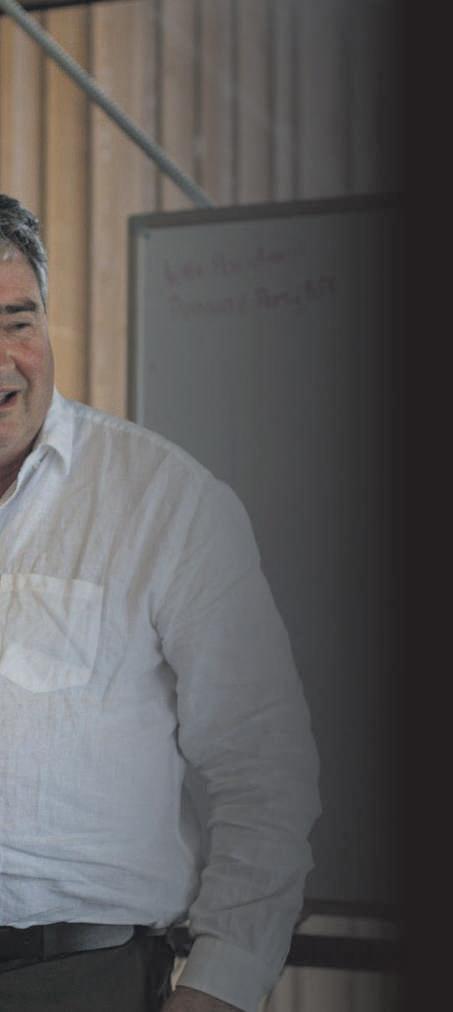


Gordon
Stuart says recovery is coming but now is the time to be proactive.
As we survive to 2025, many households, businesses and farmers are in tight financial positions.
Interest rate relief looks to be around the corner. That will help many. But any business or household that depends on the next 100 basis point movement in interest rates might have bigger problems.
The most recent OECD Economic Survey on NZ identified managerial capability as a factor behind our weakening productivity performance. We need to lift our game.
NZ Inc is at a crossroad where our standards and/or productivity have fallen in everything from education to health to building new houses. The more we channel money into low-productive areas of the economy, at the expense of traditionally more productive areas such as farming, the more our living standards are impacted.
A lot of change needs to come on the regulatory front But looking to Wellington for all the solutions is folly.
Now is the time to be proactive.
Back to basics is being used by the Government as a catchphrase. It applies to business too
In sporting parlance, if you can’t read the scoreboard you don’t know the
score. If you don’t know the score you can’t tell the winners from the losers. Great sportspeople practise and measure everything.
Here are some areas to be proactive in.
The first is measurement. To sustainably succeed in business you need to identify and diagnose any activities that could be sabotaging your financial results. From here you change activities to fix the problem or the cause. But it all starts with having detailed numbers
What gets measured gets done. What gets measured gets managed.
Financial analysis is the process of converting the numbers on your accounting report back into activity that can be understood by all your family, staff and stakeholders.
The second is trend analysis, which is a key component of financial analysis
Display your income statement in four different ways:
■ The dollar amount for multiple periods
■ Averages over the last four or five periods
■ Common size expenses as a percentage of sales
■ Dollars/unit This might be $/customer for a restaurant, or $/kg in food or in milk $/kgMS
Common sizing quickly spots expenses that are potential areas for saving or at least highlights questions to be asked.
The third is a set of Key Performance Indicators (KPIs). Examples are gross margin percentage, debtor days outstanding, stock turnover, or operating
cashflow/profits. They are all powerful tools to understand what happened, albeit after the fact – like a blood test result. They are vital to report to shareholders and banks.
The fourth is the importance of the basics Critical success factors/or key drivers that are predictive and determine your KPI results.
A simple life example – at school if you attend more than 90% of the time your chance of succeeding academically increases dramatically compared to those on 70% or even 80%.
On the farm we use data and genetics to develop a herd that produces more milk, bulls that grow faster, and sheep that have twins.
Within any business there are typically three to five major critical drivers Executing, measuring and correcting the critical drivers will ensure no nasty KPI surprises. Manage the cause, and the effect takes care of itself. An example is a courier monitoring average pick-up time/delivery time, and the percentage of parcels lost. Technology on the farm now enables the measurement of soil condition, crop yields, dry matter production and irrigation, etc.
A final observation is the importance of time. Set aside thinking time. This thinking time can allow the development of benchmarks and hurdle expectations for each critical driver. Communicate expectations to your team. Set rewards and consequences around attainment of these outcomes
Measure, report and correct the execution daily. Results will surprise you.

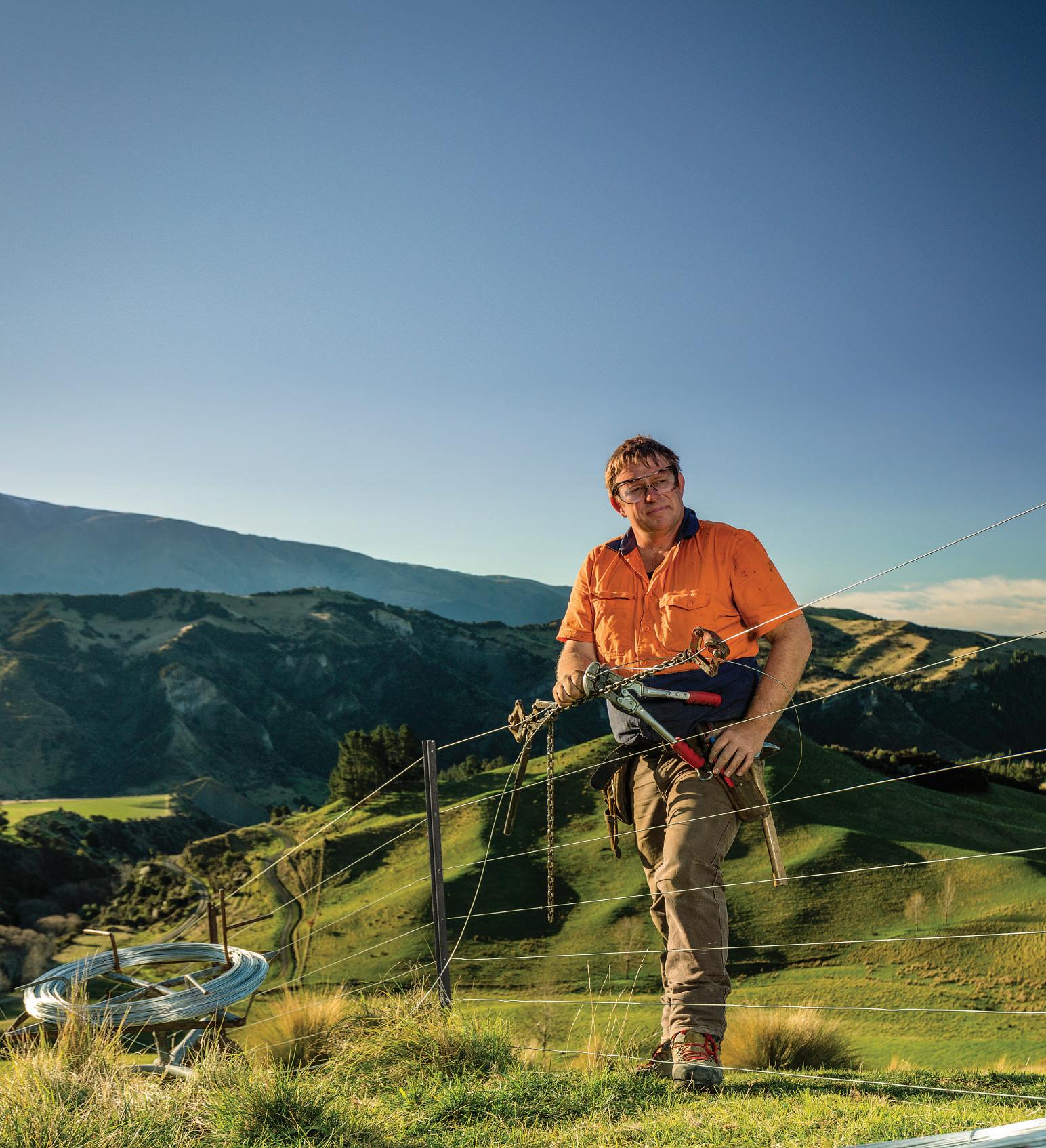
Onlyfencingwirethatcarries theWIREMARK guaranteeis100%madeand tested in NewZealand forthiscountry’s harshfarming conditions.Somake sure youask forWIREMARK, thefencingwirethat’s astough andwiryasa localfencer.
To findout more,visit wiremark.co.nz,call 0800 72278335or emailinfo@pacificsteel.co.nz
The Government and trade experts outlined opportunities for the sector at its conference in Wellington.
Trade experts outlined the opportunities and challenges for the New Zealand red meat sector in front of 300 delegates at the Red Meat Sector Conference in Wellington.
New Free Trade Agreements (FTAs), Non-Tariff Barriers to Trade (NTBs) and the ‘avalanche’ of further regulations coming from the European Union (EU) were high on the agenda at the event at the Tākina Conference Centre.
Minister of State for Trade Nicola Grigg said the conference was a chance to celebrate the sector’s achievements as a cornerstone of the economy, in the face of competitive and complex export markets.
She outlined the Government’s plans to invest in science and education, pursue new FTAs, work to reduce NTBs, advocate for reform around global agricultural subsidies, unpick red tape and enable the construction of modern, reliable infrastructure.
She said China and the United States remained key trading markets, but the Government recognised the importance of India as a major strategic priority.
“We will hustle to lift productivity and profitability. We will carry out more trade missions than ever before – we are committed to putting New Zealand back on the world stage.”
Ministry for Primary Industries (MPI) director-general Ray Smith discussed the goals of doubling the value of New Zealand’s exports and investing with the red meat and wool sector to grow sustainability and value This included MPI investing heavily in the sector, maximising trade opportunities,

Meat Industry Association chairperson Nathan Guy with Finance Minister Nicola Willis and Prime Minister Christopher Luxon at the Red Meat Sector Conference where the Government outlined its plans to invest in science and education and pursue new free trade agreements.
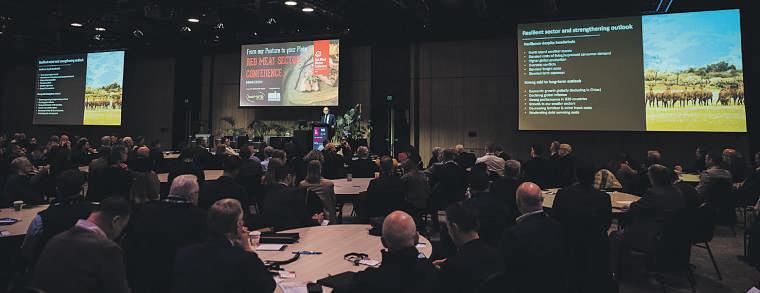
enhancing engagement and co-operation, introducing paperless trade, promoting favourable trade access and enabling regulatory settings.
Red meat and wool revenue was forecast to reach $11.45 billion in 2024 and a record $12.95b in 2028, said Smith.
China remains the major market for New Zealand red meat, followed by the US and then the EU. However, export revenue, and sheep and beef farm profitability is expected to decrease in 2023-24 driven by lower
prices for beef, lamb and mutton.
The new European Deforestation Regulation and the growing number of EU regulations and environmental NTBs were major topics in panel discussions covering the emerging trade landscape and the potential for an ANZAC joint NZ/Australia approach to dealing with some challenges.
Panel members included Ministry of Foreign Affairs and Trade (MFAT) deputy director Brian Wilson, international trade expert Stephen Jacobi, New Zealand’s
special agricultural trade envoy Hamish Marr and his Australian counterpart Su McCluskey.
Jacobi said FTAs were not sufficient to deal with ‘pernicious’ NTBs. While MFAT had eradicated 14 NTBs, worth $1.4b, the red meat sector still faced others amounting to $1.5b. He urged the sector to report NTBs and provide as much data as possible on them to support MFAT in its work.
Environment, water and animal welfare were highlighted as the most challenging NTBs likely to emerge over the next few years.
Key opportunities were seen to be the ability for New Zealand and Australia to take a ‘multi-pronged approach’, working with global partners and customers to raise awareness of challenges created by increasing costs and barriers, and ensuring a loudervoice in telling our sustainability stories
Marr said that in all overseas travels, he found New Zealand farming commanded great respect on the global stage for the excellence of its farming practices, but we needed to tell that story better.
“The regulations that are coming are environmental. We are already up there, but we are not doing enough on the international stage to put ourvoice out there.”
McCluskey said that she had seen how non-governmental organisations had “captured the EU Parliament” and farmers had been squeezed out.
“They do not have a voice – we cannot let that happen here. We need to tell the story about what we are doing around soil health, water, waste and biodiversity. The great story we can tell is what we are doing around sustainability and we need to find a better way to tell it.”
Prime Minister Christopher Luxon and Finance Minister Nicola Willis attended the post-conference event and stressed the Government’s focus on backing the sector to succeed by removing red tape, opening up markets and right-sizing regulations

The first researchers in more than a decade have applied to trial their gene-edited seeds outdoors. Louisa Steyl reports.
There’s a bit of a buzz among AgResearch scientists at the moment: it’s not every day they get to trial their gene-edited seeds “in the real world”.
In fact, it’s been more than a decade since the last application to the Environmental Protection Authority for a contained outdoor trial in New Zealand.
With approval, AgResearch will be trialling the growth of ryegrass with gene-edited additions that will make it more resistant to pests and more nutritious for livestock.
“We’re at a point where we’ve gone through the labs, we’ve been through the glasshouses, and we’ve tested overseas,” AgResearch science team leader Richard Scott said.
The next step was to test the ryegrass in New Zealand conditions where it would be exposed to pests common in the country
Ryegrass is the most commonly sown grass for feed in New Zealand. The grass is home to fungi known as epichloë endophytes which help deter pests, reducing the need for chemical pesticide, but also make the grass less palatable.
Some endophytes also produce toxins that can be harmful to livestock
AgResearch scientists have been working with PGG Wrightson Seeds and Grasslanz Technology to identify the genes responsible for this so they can make targeted changes to DNA.
Trials for the gene-edited ryegrass have already begun inVictoria and New South Wales in Australia and these were expected to take three years, Scott said Research institute Scion was the last group to apply to the then Environmental Risk Management Authority to grow genetically modified radiata pine trees in December 2010.
Scott explained that the sheer amount of effort that went into the application meant researchers had to be sure of their science before going through the process.
Researchers will need to consult mana whenua, investors, industry bodies,



Product: Sveaverken F100 autosteer.
Info :
Low cost retrofitsystem
User friendly interface



the Ministry for Primary Industries, the Department of Conservation and anyone else who may be impacted by the trial when seeking approvals.
The trial will be subject to strict regulations about movement in and out of the trial site to make sure the ryegrass is contained and the site will need to be contained to minimise plant material spreading and to keep animals out.
But Scott said based on what researchers already knew, any risks to the environment would be minimal
While the ryegrass being trialled would not necessarily be the end product, Scott said it was a “major step in the research process”.
“These research programmes can take decades. To step into field trials in the real world is a huge step,” he said. “It’s exciting, it’s creating a buzz.”
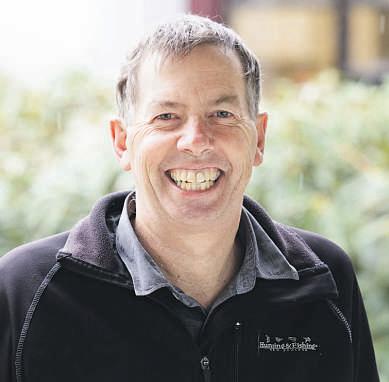



To step into field trials in the real world is a huge step. It’s exciting, it’s creating a buzz.
Richard
Scott, AgResearch science team leader

Wifi camera
Autou-turn/ path planning
Quick changekit (easily swap between machines)
2.5cm accuracy (with optiontouse free correction
PPP offeringaccuracy of 5-10cm)
Terraincompensation
Extensivecompatibility
AB straightline, adaptivecurve, pivot andAB+
Extras:
V1 RTKbase station ISOBUS
Easy control remote PRICE STARTING FROM $8950+GST




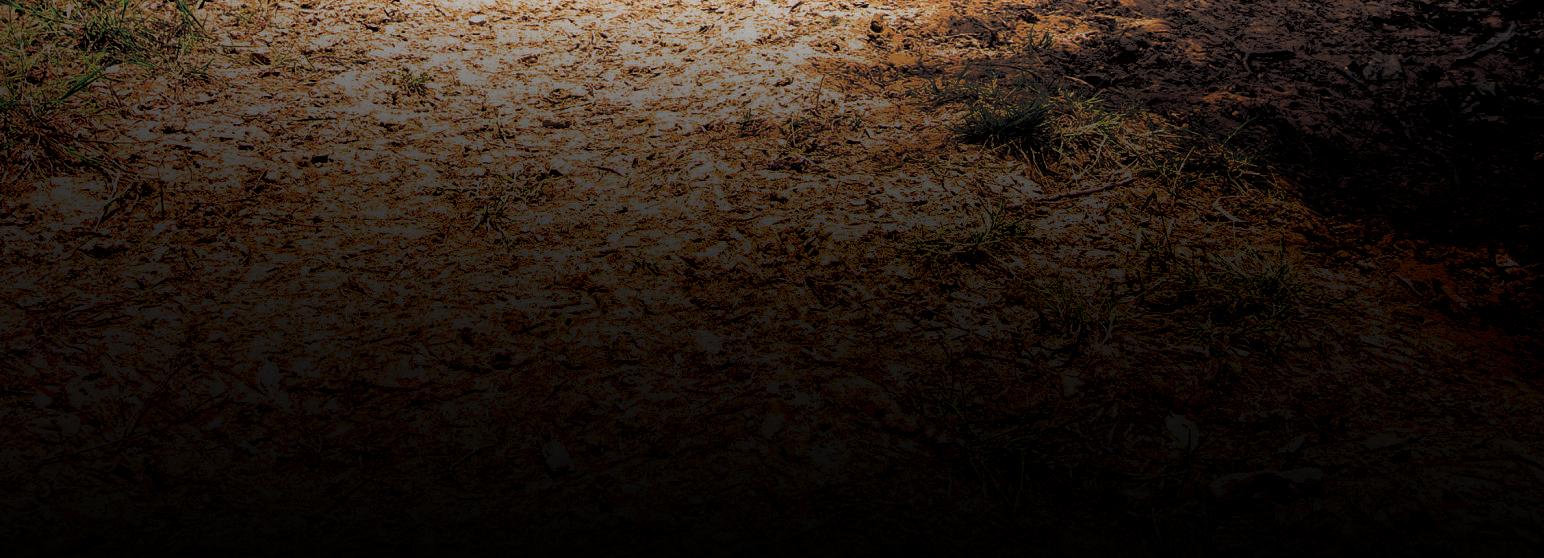

NZ Post has cut even more services, leaving some rural communities without any deliveries to the farm gate.
By Sonita Chandar.
Rural post services are being cut even further, leaving more communities without essential services
In April, NZ Post announced it would no longer be delivering newspapers and parcels to the majority of rural addresses on Saturdays, with the exception of 17 rural delivery runs that will be phased out by June 2025.
The change came into effect on June 29. NZ Post chief operating officer Brendon Main said Saturday services to rural areas were not commerciallyviable.
“We deliververy lowvolumes of items on these days, and it costs us more to deliver on Saturdays than we earn from the products we deliver.”
Recently, the Akaroa Postal Centre, in the iSite building on Beach Rd, also closed suddenly. The closure is reportedly temporary while new premises are found.
Now, Rural Women New Zealand (RWNZ) is concerned at the latest news that NZ Post will stop providing postal services to the growing Tasman rural communities of Mapua and Upper Moutere.
“It’s deeply concerning to read in

the Nelson Mail that NZ Post is putting commercial viability above the need for rural communities to access basic postal services,” RWNZ chief executive Marie Fitzpatrick says.
“Rural communities should not have to travel half an hour each way to clear their post box, send a letter or pay a bill. To add insult to injury, rural communities often suffer from poor digital connectivity, which makes it difficult to do administrative tasks online.’’
Fitzpatrick says they will continue to work with NZ Post, government agencies and ministers around NZ Post’s Deed of Understanding with the Government about minimum service provision.
“Our rural communities play a vital role
in New Zealand’s economy and deserve better –especially from a state-owned enterprise.”
NZPosthasmade furthercutstorural maildeliveryservices, leavingsomeresidents withahalf-hourdrive topostaletter LIBBY WILSON/ WAIKATO TIMES
Below:Thecostof postagecontinues torise,leadingtoa declineinvolumes.
“Our rural communities play a vital role in New Zealand’s economy and deserve better – especially from a state-owned enterprise.

Mail in general has been declining as more people use onlin services. One farmer who asked not to be named said she had noticed a huge change in the volume of mail in her letterbox.
“At one stage, come the beginning of the month, we would get stacks of paper invoices posted to us,” she said. “But now, with more services online, invoices and statements come directly into our email
and instead of spending hours sitting at the kitchen table writing out cheques and envelopes and recording everything, we just pay it direct through online banking.”
Another rural resident said she stopped buying and selling items on sites such as TradeMe because the extra cost of rural postage.
“Gosh, it wasn’t really that long ago was it when a standard letter cost 40 cents to post, but now it is more than $2. No wonder people don’t write letters to each other or send Christmas cards when it is that expensive. And as less people send letters and parcels, NZ Post keep putting the prices up There won’t be a postal service before we know it.”




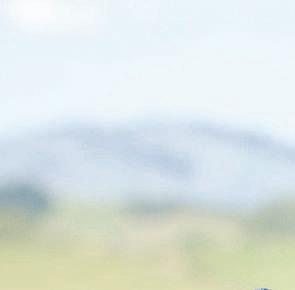


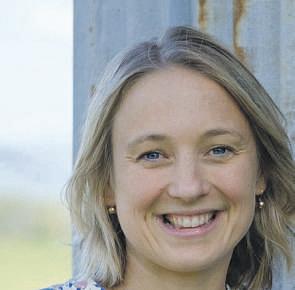


AWaikato farmer who grew up helping out on her family’s sheep and beef farm in the small community of Kinohaku, says it’s getting harder for rural farmers to sell their farms to their children.

Claire Williamson now lives with her partner Adam Thompson on a small beef farm outside of Cambridge, but often returns to the West Coast where she grew up to stay connected to her roots.
She recently won the 2024 Emerging Leader Award at the Primary Industries New Zealand Awards.
She says many are having to instead sell their farms to the highest bidder, which might be a corporation owning several farms.
As a result, there are fewer children attending rural primary schools.
There were 45 children at Williamson’s primary school in Kinohaku on the southern end of the Kawhia harbour when she first started
There were 25 before she left, and 25 years later, that number had whittled down to nine.
“It’s going to be the rural communities that are going to be more challenged because there’ll be less kids,” Williamson says.
“There’ll be less sport. There’ll be less businesses that rely on those farming families to survive.
“I think rural communities and that way of life that I grew up with is somewhat at risk.”
Williamson has seen this happen over her lifetime, and it’s what motivates her to help build community amongst rural people, and retain traditional rural values, despite the challenges.
She says she’s seeing the loss of those values and skills in her generation that were once common in rural communities.
“My auntie was a great cook and we would have said that our mothers were great cooks when they were in their early 30s, right?
“I’m in my mid 30s now, and I don’t have many people in my peer-group who go, so and so is a great cook.
“And so what that tells me is we’re losing some of those traditional rural values.”
She says skills like cooking, making clothes, managing animals on the land, living off the land, and being creative with what you have on hand, are all important skills that are at risk of disappearing.
Williamson comes from a long line of rural women living on the land, and she wants to hold on to the rural values that were handed down to her.


She does this through her work on the board of Rural Women NZ and their podcast Black Heels and Tractor Wheels, building connections and a sense of community between rural women.
Most recently, she helped organise a series of dinners with guest speakers, which prompted authentic conversations among the attendees.

“Their struggles, their wins, those things.”







Claire Williamson is motivated to help build community amongst rural people, and retain traditional rural values, despite the challenges.
By Madeleine Powers.

Her grandmothers Velma Beverley Williamson taught were the inspiration behind Williamson’s bespoke woollen coat business Velma & Beverley.
The bespoke woollen coats are made from 100% New Zealand wool spun in Auckland, and are designed to reflect traditional rural values.
The business saw her win the primary industry emerging leader award in May, which recognises someone new to primary industries with strong leadership qualities.
“In this context of being an emerging leader and in what I do, what I’m starting to look at is how do we start to bring other industries into this huge rural space that’s dominated New Zealand’s landscape for a long time.
“How do we go, actually, let’s bring some fresh thinking and let’s look at some other ways that we can make money off our land.”
Williamson says the key to holding onto farms lies in diversifying your income streams.
She says Airbnbs, such as the one she stayed at recently on the West Coast, are a good example of how you can have another source of income on your farm.
Williamson is a mortgage adviser and director at My Mortgage, helping rural people bridge the gap between the home they want and the money they need to buy it.
While some people are able to diversify their income streams, others haven’t been so lucky.
“The traditional farming system is really challenging for anyone who doesn’t have land gifted or isn’t part of a family where they haven’t had to pay all the siblings out.
“I can think of 10 examples of friends or family who have been in larger families, and you’ve got a $3 million asset that Mum and Dad own, and they need some money to retire on. There might be one or two of





“
I think rural communities and that way of life that I grew up with is somewhat at risk.
Claire Williamson
those children who might be interested in taking that farm on, but they’re going to have to be saddled with debt so that they can pay out their siblings and their parents, so that everyone can have a good life.”
‘‘They’re going to be there for a long time having to do that, and it’s hard work.”
Williamson says there are a number of factors causing the over-inflation of rural land prices.
Rural living is becoming increasingly desirable, and with remote working more feasible, more working professionals are looking to move to the country.
Then there’s the conversion of farmland to forestry, something that gained the public’s attention when Cyclone Gabrielle saw forestry slash cause destruction on the East Coast, leading to a ministerial inquiry into forestry.
“I went back to the farm that I grew up on, looked over the fence, and the neighbours have now sold to people who are planting pine trees, and that’s quite tough to see.
“I have absolutely nothing against
plantation pines, from the perspective of it being a really good way to grow timber.
‘‘But I definitely don’t love the idea of planting pines which will never be used for anything productive.”
Williamson is not alone in her concern about the future farming.
Industry body Federated Farmers has been trying to bring changes to help young buy land, such as changing rules to enable them to buy to make a deposit on land. capital cost of farms, lower commodity returns, and rising farm input costs are making it harder to attract young farmers to the industry.
Indeed, the average age of farmers is going up, not a good sign for the future of local food producers.
For Williamson, diversity is key, not only for making it possible to own a farm, but for solving some of the challenges facing farmers today.
For Williamson’s partner Thompson this has looked like running plant nursery business Restore Native, in addition to his small beef farm near Cambridge.
The nursery generates a steady income which enables them to continue farming.
She and Thompson are passionate about increasing biodiversity, and are striving towards creating a diverse and productive farm which can provide food for the family and community.
They do predator control to protect the native plants and birds, and have planted several species of fruit trees on the farm.
“We’ve planted 100 avocado trees and 25 citrus trees, and we’re about to plant some stone fruit. So the idea is that we’re going to have a real garden of Eden there, which will be connected to our goal of being able to feed more people.”
Williamson says she’d like to see more of a ‘carrot’ than ‘stick’ approach to improving environmental outcomes on farms, where food growers are encouraged to increase biodiversity, rather than just focusing on emissions.
But, she says it’s a balancing act.
“How can we improve environmental outcomes while still being as efficient as possible?
‘‘It’s a balance. We’re world leaders in growing food, but we need to prove that we’re world leaders in the environment space too.”
Principal Nick Jensen is heading to the UK after five years at Kiwitahi School developing a close sense of community.
By Bethwyn Littler
Nick Jensen is off to teach in the UK later this year and he is hoping to take some rural Kiwi ideas with him such as a young farmers day.
Jensen is currently principal of Kiwitahi School, a small rural school near Morrinsville.

“I have always had a passion for little rural communities so when I took this position five years ago it was a dream job.”
Jensen said rural schools are special because of the strong sense of family and immense community involvement.
“If we need help it is just a phone call away. You have a lifeline out in the country you might not get in the city, whether it is family members doing school accounting or digging out a hāngī on the field.
“At this school we aim for high quality teaching which is challenging and rigorous, balanced with the freedom to have fun with friends, climb a tree and basically be a kid.





‘‘We want to strike a balance.”
The children at Kiwitahi certainly know the best tree to climb, scaling it with ease and creeping out along the branches.
“We don’t get our childhood back, so why make kids grow up and worry about the problems of the world when they should just be worried about what is for lunch and what’s the best tree to climb?”
Jensen said. “Rural kids can be very practical, they spot a problem and want to solve it There is a rural mentality that nobody is going to fix the problem so how am I going to fix it?”
The year Jensen started at Kiwitahi there were 28 pupils. This year they will finish with 85. There are four classes and Nick teaches two days a week
Jenna Smith is a parent at Kiwitahi School and has noticed the school roll has gone up noticeably since Jensen became principal.
“He has been awesome, we appreciate the fact that he is always at the front gate when we drop the kids off at school.”
“Children who are not in-zone for Kiwitahi have flocked here,” Jenna said. “The roll has grown significantly, I guess because of the way he has developed the school culture over the years as well as his approach and his philosophy to education.
“It is a friendly, welcoming, tight knit community. He created an out-doorsy approach where kids are climbing the trees, like that 90s childhood we all had.”
Josh Latif is one of the parents who is sending their child to Kiwitahi out of zone, because he heard about Nick’s approach to education.







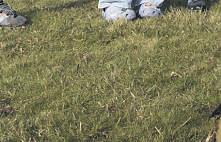

“Every morning he is out welcoming parents and kids by name. It makes you feel a huge sense of belonging.
“The children are allowed to roam and explore and I hope our son will continue to be pushed to try new things. They had the young farmer day recently and the kids were out milking goats, changing tyres and choppin firewood.”

Jensen said he would like to take the young farmers day concept to his new job in the UK. “At Kiwitahi livestock day is in spring and young farmers day is in autumn.
KiwitahiSchoolprincipalNick Jensen.“Weaimforhigh-quality teachingbalancedwiththe freedomtohavefun.”
‘‘Young farmers day is for all children to have a go with farm activities. There is a trophy for those feeling competitive.”
The initial idea was Jensen’s but he said it would not happen without of a group of dads willing to give up their time and share their expertise.
“The event is a way to celebrate the school’s heritage and use rural skills as





is of learning. Rather than putting away equipment, like an axe, children learn how to use it properly,” Jensen said.
“By giving children a sharp axe they learn how to assess risk and how far to go. If you don’t teach them how to do when they are young will make stupid mistakes when they are older which is more dangerous.”
Latif is glad he made the choice to send his son to Kiwitahi. “I love the thought of my kids being encouraged to get out and climb trees I have seen my son right out on the end of a branch. It is very character building and hugely important.”
Jensen is not sure if he will be able to introduce wood chopping to his new school but he is hopeful that he can bring some agricultural events to their calendar.

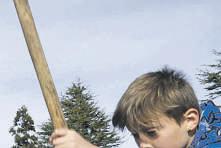

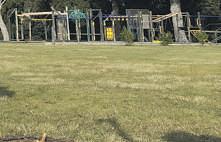





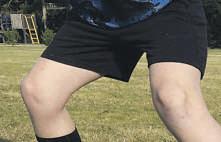









Short-rotation forestry shows promising opportunities for sustainable land management. By Bethwyn Littler
Short-rotation forestry could be a game changer for sustainable land management in New Zealand
A two-year Scion research project has highlighted the opportunities it could provide for our bioenergy production, with it providing renewable energy such as wood pellets, torrefied briquettes or liquid biofuels for marine and aviation sectors.
Short-rotation is a practice that involves growing and harvesting trees on a short cycle, between 12 and 18 years, rather than the conventional 28-year forest harvesting
cycle. Silviculture and forest carbon scientist Alan Jones said Scion’s modelling showed that short-rotation forestry as a feedstock for bioenergy had the potential to replace 6% of New Zealand’s annual fossil fuel demand from less than 1% of the land area.
“We’ve built on research from a decade ago and assessed the feasibility of rapidly upscaling bioenergy production from forests.
‘‘We’ve found there are particular regions well-suited to short-rotation forestry which provides an opportunity for communities to transform their economic base and

reshape New Zealand’s energy future.”
The research recommended short rotation should be established on lower value land where transport distances to processing locations can be minimised Regions suggested include the Central North Island, Northland, the East Coast and Otago.
The ideal species for short rotation was pinus radiata because of its rapid growth, high degrees of adaptability and disease resistance in a range of growing locations. Scion researchers may also re-evaluate established forestry stock for bioenergy.
Conventional tree breeding over the past 50 years had focused on timber quality, minimal branching and straightness.
“For short rotation we want high levels of branching,” Jones said.
Powers.
Farmers say knowledge is key to winning the fight against the disease that has been plaguing the agricultural industry for more than a century.
Facial eczema (FE) disease costs farmers an estimated $332 million annually through reduced animal growth rates, fertility and production, and loss of animals during severe outbreaks.
Farmers can lose up to 70% of their hoggets and 20% of lambs during an outbreak. The disease is caused by the fungus Pithomyces chartarum, which produces toxic spores in warm, humid weather. With climate change, those conditions are expected to increase, and move further south.
Whanganui hill country farmer Bevan Proffit is part of a 16-member farmer research advisory group doing research into on-farm strategies to reduce the impact of the disease Proffit, who has been farming for 35 years and has experience dealing with the disease on his farm, said he hoped FE research would help raise awareness as the disease crept further south
“I think it’s a good idea to try and make it real for people that haven’t had it, haven’t been affected by it, so they can appreciate what the worst-case scenario would be and what that cost could be to their businesses,” said Proffit
“You might have a challenge one year, but
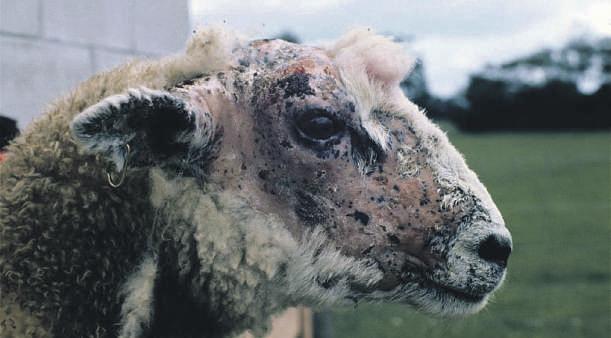
it might be another 10 years before you have another challenge. So there’s people that miss out and don’t experience it, and don’t know someone first-hand that’s had trouble.
‘‘We’ve got to make sure we do keep passing that knowledge on.”
Proffit says breeding resistance into his ewes has meant his animals are less susceptible to the disease. As a result, his animals are more competitive in tougher times.
Proffit is part of a Beef + Lamb NZ research initiative seeing 200 farmers across the country collecting dung samples from their farms to test for the disease, which can go undetected on the farm when the spore count is low. Some of his samples have shown spores on his farm, even though he’s not in a high-risk area, and it was outside of the peak spore-count season.
“If there’s a low level of spores all season, it accumulates and it will be significant at the end, and sometimes we just have a challenge for a short period, but it’s a very significant challenge. So there’s so many


• MPI approved method,calves administered local anaesthetic, not sedated thereforeless chance of infection. BioSecurity procedures arestrictly followed. No disruption offeeding routine -which further reducesstress.
•Wealso offer: Deteating, Vaccinating, Tagging, Elastration of bullcalves and DNA testing.
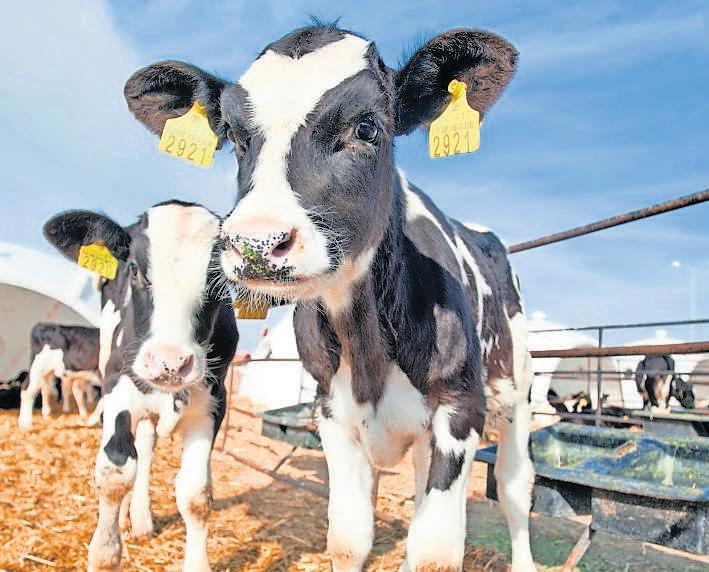
for resistance for more than 50 years
“Because it had been on our radar, we were thinking, it’s only going to get worse and more prevalent. That was our motivation to jump into that not only for our own benefit, to breed rams that we can use over our own, but to help other farmers produce rams that are highly tolerant.”

unknowns, and we’re trying to understand the unknowns.”
It’s research like this that Proffit says helps to better understand the disease.
Paul Crick, chairperson of Beef + Lamb NZ farmer council and Wairarapa beef, sheep and deer farmer is also part of the group of farmers sending dung samples to test for FE spores. When a test came back positive after a drought and a series of negative results, he said it showed how much there was to learn.

Crick said farmer welfare was what initiated the beginnings of more research into facial eczema. He said he had friends in the Waikato who had been badly impacted by the disease.
“Certain times of the year, they’re absolutely walking on eggshells and shitting themselves. There might be some stuff that we can do around internal parasite management, but with regards to FE management, if you haven’t got tolerance in your genetic base, that’s a pretty scary thing to be facing.”
Crown research institution Scion announced in June it would be joining the fight against facial eczema, contributing its scientific modelling expertise to Beef and Lamb’s $20.75m Eliminating Facial Eczema Impacts (EFEI) programme.
Crick had been involved with early steering groups for the disease, and even though Wairarapa wasn’t known for being very susceptible to FE, in 2021 he took the opportunity to buy a highly resistant ram from a Waikato farm that had been breeding
Scion senior research economist Richard Yao and resource economist Saeed Solaymani will be analysing survey data collected from 600 livestock farmers over a phased seven-year programme to understand the effectiveness of new prevention strategies and tools being developed to combat the disease. The EFEI programme is expected to achieve a reduction of $38m in economic costs associated with the disease, with longer-term benefits to New Zealand’s economy expected to increase by an additional $20m each year after the programme ends
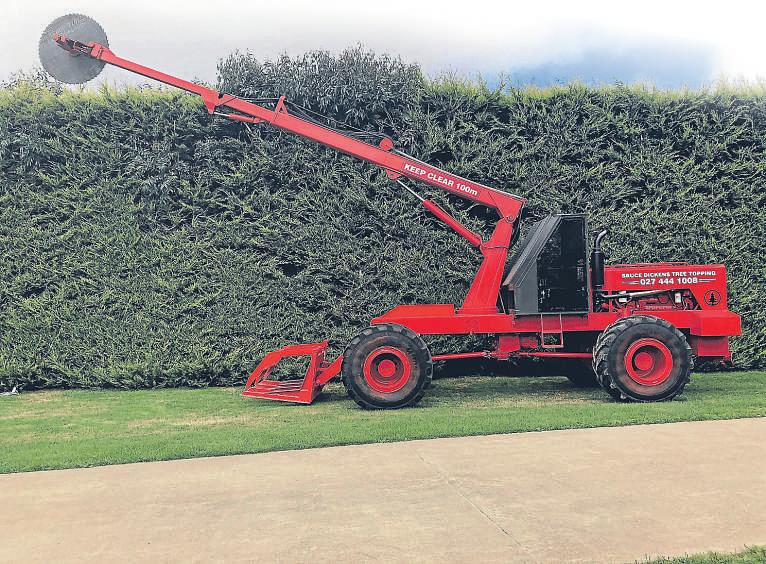

Chilean needle grass has caused a collective headache for farmers.
The Environmental Protection Authority has now approved rust fungus in New Zealand to control its spread.
By Eve Hyslop.
Chilean needle grass could cost farmers up to $1.16 billion in lost production if left unchecked
The Environmental Protection Authority (EPA) is combating that with the release of rust fungus to control the spread of the invasive grass.
The grass was introduced to New Zealand in the 1920s from South America and can cause severe animal welfare issues. The sharp seeds bore into the eyelids and pelts of animals, sometimes resulting in blindness.
The fungus has been approved by the EPA to help slow the spread of the aggressive weed and reduce harm to livestock and other animals, says Dr Chris Hill, general manager for hazardous substances and new organisms at the EPA.
“Testing shows this rust fungus can successfully slow infestations, killing the foliage of the Chilean needle grass as well as reducing its growth and seed production.
“This rust fungus is highly host-specific, meaning it only lives on Chilean needle grass.
“The testing results provided to us showed it is highly unlikely to harm native plants or animals. There is also no risk to people.”
Miriam Robertson, new organisms
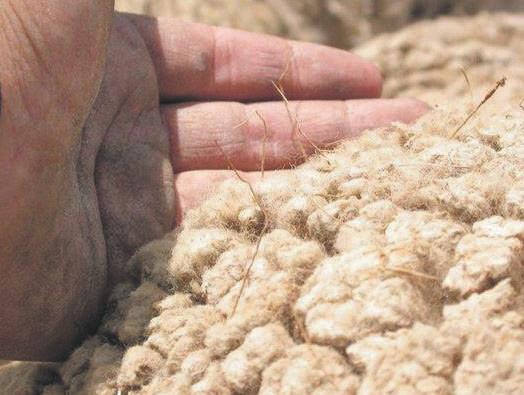


“
The testing results provided to us showed it is highly unlikely to harm native plants or animals. There is also no risk to people.’’
Chris Hill of the EPA
manager at the EPA, says this is just one tool in the toolbox for control; other methods will still be required.
Research was undertaken before the rust fungus was introduced to New Zealand, to ensure it was not carrying any unwanted diseases or pests, Robertson says.
“Research happens in the home location of whatever pest is trying to be managed and, as part of that research, they look at possible control users. And then they test them in the home country to see which ones effectively work.

“They then bring a population over to New Zealand in a lab, a contained environment where it can’t get out, and they do the tests here to make sure that it’s safe to come into the country.”
The testing also ensures the control user will be specific to pest so it won’t harm
organisms or animals The rust fungus then goes through a final check against biosecurity requirements before it can be released into the environment.
Seddon farmer Tim Struthers says the needle grass has been a headache on his farm for a long time.
“It’s thick and it’s only going to spread here. It’s in the places that we can’t get on, like real steep faces, which is the issue. We’ve tried drones and spraying but you’ve got to get something in there that will out-compete needle grass.”
Herbicides and a weed wiper had been Struthers’ best shot at controlling the grass in recent years, but neither method provided a “golden bullet”, he says.
The herbicides had taken out a lot of othervaluable plant species while the weed wiper removed only the plant itself, leaving behind seeds which could stay in the ground for 10 to 15 years.
The grass has not only taken over his paddocks, but the planning of his livestock operation.
“We’ve got a few restrictions on how we can sell and buy stock, so we’re not allowed to sell any store sheep at all unless they’re finished, because they’re good hosts for [Chilean needle grass]
“That’s all well and good, but you’ve got to plan ahead because if you can’t finish them, you’re stuck with them.”
The restrictions are slightly more lenient with his cattle, which he is allowed to transport for grazing between April and October when needle grass isn’t in bloom.
Outside those months, he can send cattle away only if they’re going to the works. Once again, this takes more planning.
This spring, Struthers plans to get the rust fungus onto his farm with the help of the EPA. He says he’s looking forward to seeing the damage it can do to needle grass and hopes it will ease the workload of having to control it.
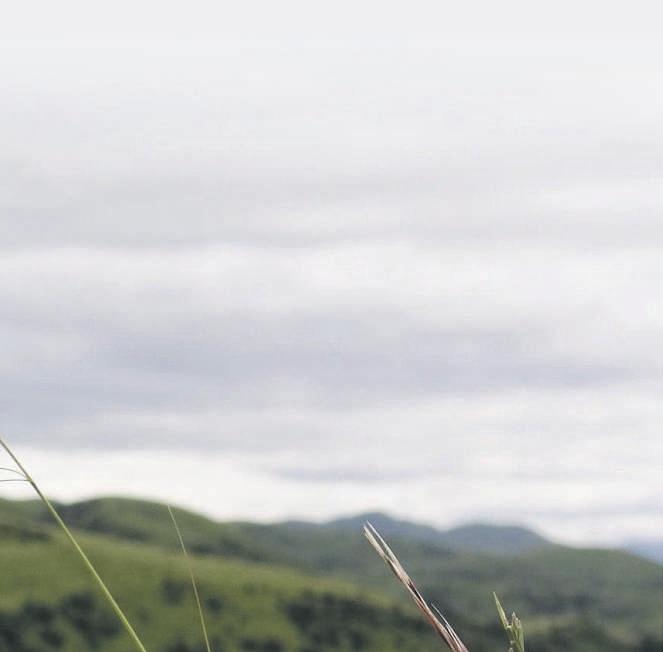
Inset:Therustfungusshown onstrandsofChileanneedle grassinManaakiWhenua’s containmentfacility. MANAAKI WHENUA-
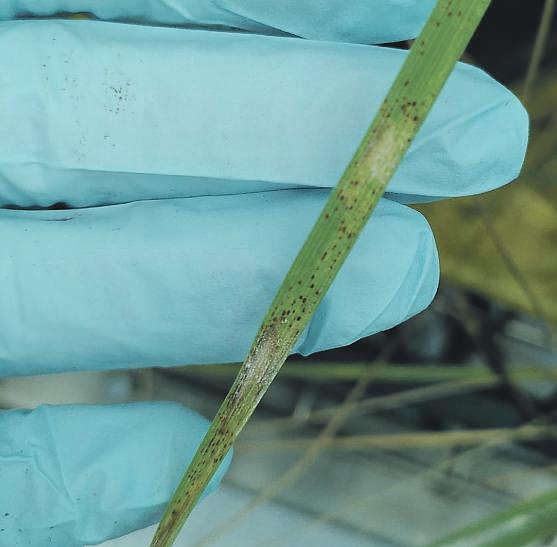


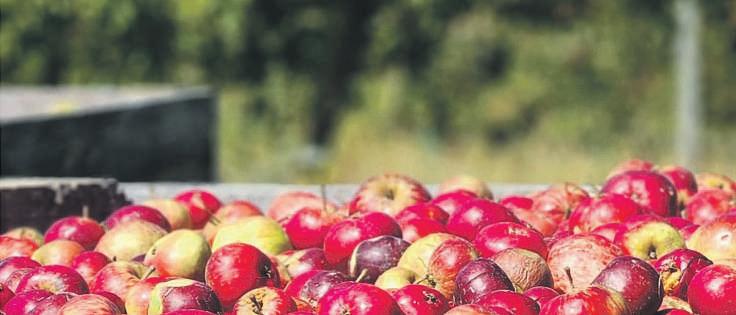

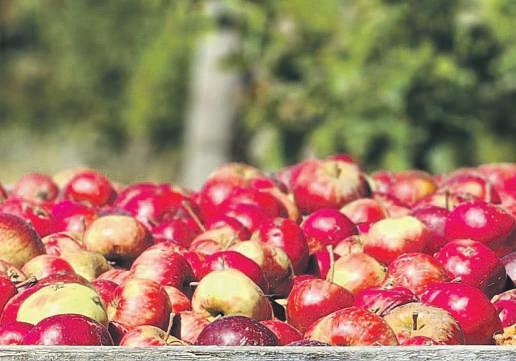

Efforts to create a premium cider industry in New Zealand have been bolstered by Cider Apples New Zealand’s ‘roadmap’ report which predicts a billion-dollar export industry.




By Eve Hyslop.
Abillion-dollar export sector, a ‘premium cider’ section in the supermarket and liquor stores and more than 2000 hectares of cider apple orchards nationwide.
This is what the future of the cider industry may look like in 15 years, should a recently created ‘Roadmap’ report released by Cider Apples New Zealand (CANZ) get on track
The roadmap follows a course towards a premium cider industry in New Zealand, with a billion-dollar export sector to match.
It’s backed by funding from the Ministry for Primary Industries (MPI) and The Agricultural and Marketing Research and Development Trust (AGMARDT), enabling economic analysis and research into how a premium cider industry might be achievable.
The initiative is led by co-founders of CANZ John Powell and Allan White, who have been working on the report over the last year.
“We envision a future where New Zealand premium cider stands at the forefront of global markets, celebrated for its quality and authenticity,” says Powell.
Cider maker and co-owner of Peckham’s Cider in the Upper Moutere Jody Scott says the report will help improve the quality of cider in New Zealand.
“It’s a pretty underdeveloped industry, New Zealand’s markets are sort of flooded with some cheaply made cider which makes it quite hard for people to find cider that’s a premium product.” Scott says that due to vaguely written food standards with no minimum juice content, it’s tough for premium cider makers to elevate their product in the market so he hopes the report will help raise those standards.
“The way it’s made can be made from concentrate, or fresh apples so you can use a tiny amount of apple juice or concentrate,

JodyScott, cidermaker,cideryand orchardownerandchairmanoftheFruit WineandCiderMakersAssociation.
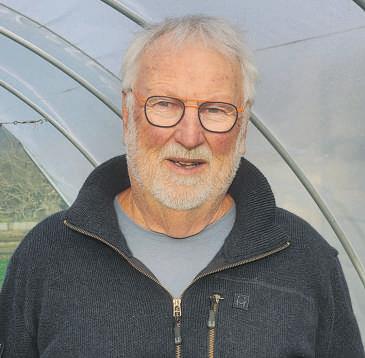






then add water and sugar to bring the alcohol really high up and then water it back down.”
Their goal is an ambitious one, with 2232 hectares of cider apple orchards needed to reach their billion-dollar export milestone. There are currently about 9000ha of apple orchards planted in New Zealand.
The 2232ha is expected to produce 125 million litres of cider annually, assuming an average export price of $8 per litre. Though currently the smallest market among fermented alcoholic beverages, cider shows promising growth trends globally, with consumption exceeding 2.6 billion litres and a notable shift toward premiumisation.
“It requires investment, it requires courage, but it’s not an impossible task,” White says.
The plans are in place to make this goal realistic, by optimising the use of nonpremium agricultural land and leveraging the country’s renowned agricultural expertise.
As a seasoned apple breeder, White is developing a portfolio of premium apple varieties that can be grown in orchards in the coming seasons.
Scott says that establishing some new varieties that are unique to New Zealand will be key to a premium industry.
“If you can have a brand new tasting experience that starts in New Zealand for cider, I think that’s a massive thing for the industry.”
Scott and wife Lois run Peckhams Cidery and Orchard and he says they plan to experiment with newvarieties with the prospect of bringing a unique cider to the market.
White also highlighted the opportunity for growers to tap into land used by

wineries, rather than starting from scratch and overspending.
“There’s very little difference between how you produce wine and how you produce cider, you basically use the same equipment, so we believe there’s quite a lot of unused capacity in our current wineries.”
The ambition also comes from the evident success of New Zealand’s sauvignon blanc and aromatic hops, a story which White and Powell are confident producers can replicate with cider.
“What we suggest as a possible model is the story around the sauvignon blanc. It started with an innovative winemaker who headed off to win a world competition in the UK That became Cloudy Bay.”
As chairperson of the New Zealand Fruit Wine and Cider Makers Association, Scott knows of the strong capabilities of producers.
“New Zealand’s got all the skills set in place, we’ve got this amazing apple breeding programme, we’ve got the land so we should really be making some of the best ciders in the world.”
CANZ has been encouraged by the reaction it has received from distributors, especially one who was reluctant to take on premium cider as they hadn’t done so before. After convincing from White to ‘give it a go’, the distributor was pleasantly surprised.
“They came back and said, ‘Hey, this is not what we expected. This is really good and we can actually see ourselves selling it’.”
Powell says the report encourages the industry to take a consumer-led approach.
As more beer drinkers are opting for a gluten-free alternative, cider is making its way into the glasses of many New Zealanders.
New Zealand chief executive Nadine Tunley bids farewell to the role she has thrived in.
This will be the last column I write for NZ Farmer as chief executive of Horticulture New Zealand. It is a role in which over the past 3½ years I have had the pleasure and privilege of serving our country’s horticulture growers.
Being entrusted to lead HortNZ has been the culmination of a 30-year career in the primary sector. Looking back over that experience, I can reflect on so many examples of the resilience, passion, tenacity and adaptability our growers and farmers exhibit year after year.
That resilience has perhaps never been tested more than throughout the last four years. Just as it seemed the new ‘normal’ might be emerging following the global pandemic, Cyclone Hale and the even more devastating Cyclone Gabrielle struck.
At the same time, horticulture – along with the entire rural sector – was facing up to legislative changes being implemented at an unprecedented pace Inflationary pressures have hit hard, and the ongoing costs of production and interest rates continue to test many growers on a daily basis.
So, for much of my time as chief executive, our sector has been dealing with crises or in a state of recovery and HortNZ has been working hard to provide support.
ADVERTORIAL

I am proud that, despite this, we have still also achieved important milestones.
Great credit must go to the passionate and dedicated team I have had the privilege to work with They are 100% committed to working in growers’ best interests.
I have also been fortunate to have a supportive board that provided the scope and freedom for us to make some significant changes. While these are not all concluded, they are embedded in HortNZ’s strategic direction and the Aotearoa Horticulture Action Plan.
Throughout and in the aftermath of these very difficult events, HortNZ has worked hard to support growers to rebuild and recover. We have focused on continued relief, advocacy for long-term support and providing practical resources to help growers get back on their feet. We have worked to facilitate access to Government and lobbied to get officials and ministers out on the land
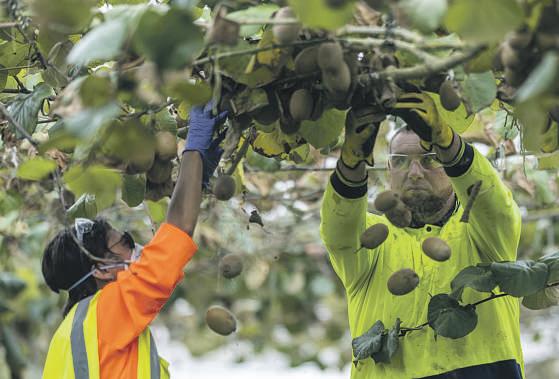
to see and hear first-hand the challenges and constraints our sector is dealing with.
Our policy team has worked tirelessly with local authorities and central government to streamline processes and outline where existing or proposed policies are untenable and often unworkable.
We have pushed for regulatory adjustments to reduce the bureaucratic burden on growers, allowing them to focus on recovery and or greater productivity.
Furthermore, we have been vocal advocates for long-term, sustainable solutions to enhance resilience for growers following natural disasters.
This involved lobbying for infrastructure investments in water storage and flood protection. Our policy team has actively engaged in discussions with the Government about water policies, advocating for approaches that support sustainable water management practices while meeting
Down in Woodlands is HorizonFlowers’famous tulip farm managed by RoySmak. The Smak family cameover from Holland more than 30 years ago to helpHorizon grow tulipsinSouthland’s ideal tulipgrowingclimateand soil.When they’re not in tulips, someofthe paddocks areleased and planted in sugar and fodder beet bylocal agricultural contractor and farmer,ErikSmak.
Erik’scontractingbusiness coversa wide areafrom SouthOtago right downtothe bottom of Southland. He not onlygrows thebeet but runs hisown big, self-propelledbeet harvester to liftsugar beetand sells them to farmersfor winter feed
We caught up with Erik on theHorizon Flowersfarm to talk about hisoperationand theKWS Conviso® Smartsystem
Cleaner crops. No more gaps. The benefitsofthe ConvisoSmartsystemtoErikare more than sugarbeet bred to be herbicidetolerant.
It’s the high germinationrates thathaveimpressed, as Erik explains.
“WithKWS,we’ve hadbothsugarbeet and grazing fodderbeet andboth have very high germinationrates…it comesupniceand even, Idon’tlikeseeing gaps…plusit’svery palatable to cows.”
As acontractor,you want to get the most out of the land you’releasing. It’s allaboutyieldsand efficiency. Higher germinationmeans every seed planted is going to grow.Flexibilityonspray dates and crop stage sprayingisalsokey in Southland as weather can get in the way
“The spray system that KWS gave me, completelyknockedout everyweedand the crop is very,veryclean andhealthybecause of that.So, definitelygiveita go. It’saneasy, simplesystem with good proven results.So, if you’re considering it, just go and do it,” vouches Erik

Farleft:HorticultureNew Zealandchiefexecutive NadineTunleysays muchofhertenure hasbeenspentdealing withcrisesorinastate ofrecovery,butsheis proudtheorganisation achievedimportant milestones.
Left:Akiwifruitorchard getsfruitpulledfromits vinesafteritwasflooded byCycloneGabrielle. PATRICK HAMILTON, JOHN COWPLAND/ALPHAPIX
the needs of our sector. Seasonal labour remains one of the most challenging issues for our growers and the Recognised Seasonal Employer (RSE) scheme is a crucial component of our labour eco-system.
HortNZ has pushed hard for the Government to thoroughly review the RSE policy settings. We have also consistently pushed for immediate policy changes that would support our growers, such as removing the accommodation freeze, adjusting the 30-hour per week minimum requirement, and changing the +10% wage threshold indexation imposed by the one minister of the previous government.
I leave knowing that the future of the sector is in extremely capable hands, and I am confident that it will continue to grow and thrive, playing its vital role in feeding New Zealanders while contributing to our nation’s economy and as a leader in sustainable agricultural practices
SCAN TO LEARNMORE ABOUT ERIK'S STORY





Among the coastal hills of Raglan overlooking the Whāingaroa Harbour and Tasman Sea, a family farm is focusing on environmentally friendly practices.
It has turned back the clock and revived the nostalgic bottles milk delivered in crates.
Dreamview Creamery is a family affair owned by David and Bronwyn Hill along with their daughter Jess, who is the driving force behind the business. Daughter Kathy and son David have also been involved in the farm and business


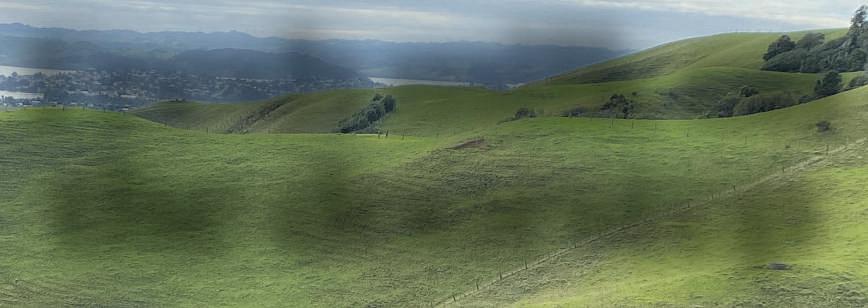

Raglan milk company Dreamview Creamery is passionate about connecting rural and urban New Zealand. By Bethwyn Littler.
milk company Dreamview Creamery is


Jess is particularly passionate about connecting rural and urban New Zealand.
“We have had chefs come out to visit us on the farm and they notice we are one big family.”
The Raglan dairy company provides milk to high-end Auckland restaurants such as Paris Butter in Herne Bay.
Head chef Zennon Wijlens said Paris Butter has been incorporating Dreamview milk into its dishes for about a year.
“I get to try a lot of new products, but very few stop me in my tracks and make me say wow,” he says. “It is, without a doubt, the best dairy in New Zealand.”
Dreamview has been in business for seven years, now employing 16 staff and






delivering to nearby Hamilton as well as Auckland, Tauranga, Ngaruawahia and Te Awamutu.
The idea of the creamery came to Jess Hill while she was away at university.
“While I was in Christchurch studying at Lincoln I worked for a small milk company called Happy Cow. They had 20 cows and sold milk in glass bottles at the Lyttelton farmers’ market every Saturday.


“Around the same time Dad said he was ready for another challenge.
‘‘So I came back from university a year early start the Dreamview business.”
In the beginning, they bottled 30 litres of raw milk each week in a shipping container. Due to demand and further investment, this has now grown and the creamery produces pasteurised and unpasteurised milk as well as cream and yoghurt.

“Pasteurised milk is most popular because we can sell it to cafes and shops but more than 50% of our home deliveries are raw milk,” Hill says.
“We have three drivers delivering to around 150 Hamilton homes every day. By receiving a bottle of milk on their doorstep I think customers feel a connection to the animals on the farm.”
Her family have owned the 120-hectare property for 25 years and milk 250 cows. They have only just recently stopped
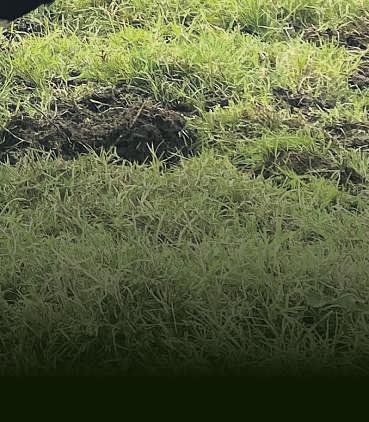

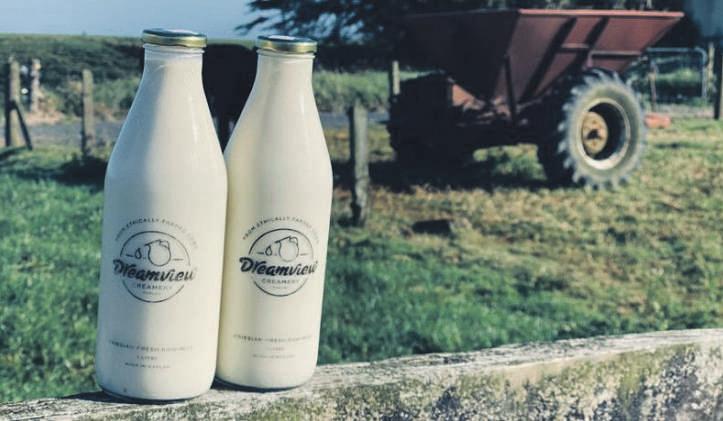
JessHillsayspasteurisedmilkistheirbestsellerbutmorethan50%ofhomedeliveriesarerawmilk
supplying milk to Fonterra.
“It was a scary decision but we needed more milk for the creamery. Even today we only just had enough milk to feed the calves and the creamery.”
Earlier this year Dreamview hosted a public event organised by Pamu’s Open Farms initiative.
She says she has also been inspired by her parents as well as loyal customers
“I am proud of the fact this is a family business, my parents built this place from the bottom up. So many of our Raglan customers have been with us for seven years.
‘‘This business would not be possible without everyone involved.”

Three new calves in one go make a good start to the season.
By Madeleine Powers.
Rare triplet calves April, May and June, were born at a South Waikato dairy farm on a Monday – two weeks’ premature, but healthy, and all heifers.
The triplets made a good start to the calving season at Phil and Bernadette Winter’s 260-hectare dairy farm in South Waikato.
“They’re all alive and healthy and all heifers, and right at the start of calving so we’ll be able to name them number 1, 2 and 3,” Phil Winter said “It’s lucky because she’s one of our better cows, so three high-quality keepers.”
Phil and Bernadette Winter run 670 cows on their farm, which they own in partnership with Phil’s parents.
Even for people farming for years, three healthy calves is still a rarity
Eddy De Weerd, vet and director at South Waikato Veterinary Centre, said it was very rare to have triplet calves, and even more rare for them to all be heifers
He hadn’t seen any triplets in his 27 years as a vet.
“You just don’t hear about it,” said Bernadette Winter, who runs a 46ha support block down the road, where 150 of the heifer calves born this season will be reared
Winter’s son Flynn, who is studying agriculture while working on the farm, found the triplets, born two weeks early

on July 15, but all healthy and being looked after by their mother.
His mum says they’re none the worse off for being born early.
“I saw them and I thought they’re too good for that, they’re actually a good size,” she said
This is the second set of triplets
Bernadette has ever seen.
“I’d never seen it before and never thought I’d see it again. The fact that she
had them all by herself, with no help.
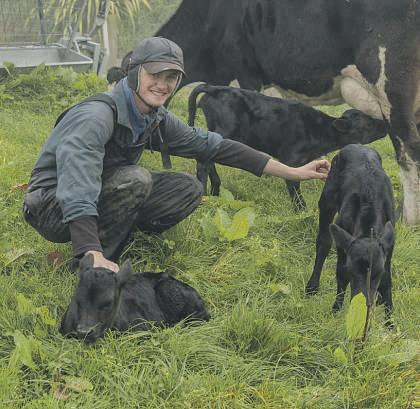
“Usually there’s some excitement on the farm every year, so this’ll be it.”
Winter says usually they take calves straight away so the mother can be milked and the calves kept warm in the barn, but the triplets will stay with their mother for a few days.
“We’ll leave them on mum for a few days for her to get over the effort of having


Mixand Pour is ahighperformance, quick settingfloor screed designed specifically with maintainingdairy farm shedsand feedlots.
This product helpsensurethe sanitary upkeep of your milk production and maintenanceofthe buildings
Take advantage of theoffseason and get your floorsrepairednow.For more info on this productgiveusa call!

which is deal, and it means the calves get the milk straight from mum, which is the best for them.”
Winter says treating the animals well, and having a moment to give them a pat during a busy day, makes farming worthwhile.
“We’ve always had a quiet herd. If you look after them, they look after you.”


A couple who played a key role in the development of Northland’s wine industry are bowing out with a great deal of satisfaction. By
Just a few minutes’ drive north of Kerikeri lies the iconic and picturesque Marsden Estate Winery, which has made a name for itself with its award-winning wines and innovative restaurant over the past three decades.
Now, 31 years after owners Cindy and Rod MacIvor made the move to Northland, they look back on their time at the helm of Marsden Estate, and can be satisfied that they played a key role in the growth of Northland’s wine industry.
From the time they planted their first vines in 1993, they were passionate about creating something special on their Kerikeri block.
Back then they were only the third Northland winery, after Longview Estate and Okahu Estate – about two centuries after Samuel Marsden, the driving force behind the establishment of Anglican mission stations in New Zealand, planted the first grape vines in Kerikeri.
Today there are about 40 wineries in Te Tai Tokerau, and Rod is making wine for many of them.
Back in the early 1990s, Rod was keen to try his hand at making wine, while Cindy wanted a restaurant. They believed that if they could do this in a tourist area, they could make money.
They achieved both, and have won plenty of awards and accolades over the years due to their passion and the efforts of their team.
Little did they know just how much the Northland population would bloom in the 31 years since that first planting.
“We were living in Wellington and looking for somewhere else to live, so we drove up here. It was green, warm and we spotted this block of land.”
Abandoning their careers – Rod as a builder, and Cindy in her role with the Evening Post and The Dominion

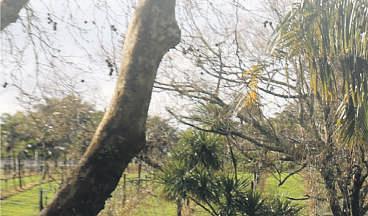
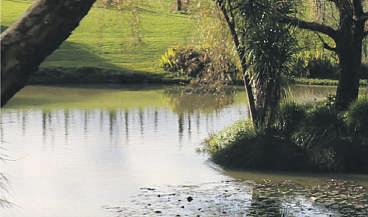
Steve Macmillan
newspapers – they made the move north to realise their dreams.
“The restaurant was designed to be a venue for wine sales in many ways, and we felt if we could grow the grapes, selling wine in-house would be the value-add Our cellar door and restaurant account for 90% of our wine sales.”
When you consider that the cost of producing a bottle of wine in Northland can be anywhere from $12 to $22, and cropping levels vary from four to seven tonnes to the hectare – compared to 21 tonnes to the hectare in Marlborough sauvignon blanc territory – it was critical that the MacIvors got their price point right.
And with only 10ha of vines, they were particular about their grape selection and mindful of creating niche wines.
Starting out with chardonnay and cabernet sauvignon, they gradually added tempranillo, merlot, pinotage, syrah, muscat, pinot gris and chambourcin.
Rod says their operation is tiny, producing about 2300 cases annually, which totals 30,000 bottles.
As he looks back on their tenure, Rod has concerns about the sector.
“The New Zealand wine industry peaked in the late 1990s-early 2000s, when there were mostly family-owned wineries. A lot of the industry is owned by corporates now, and there is a huge number of small to medium-sized wineries not making money because of the number of high production costs.”
He says wine goes in cycles, so he is hopeful that the industry will bounce back from its current downturn.
For Cindy, the journey has exceeded her expectations – highlighted by the fact the car park and restaurant are now both too small for the patronage, which gets incredibly busy throughout the summer months and enjoys local support during

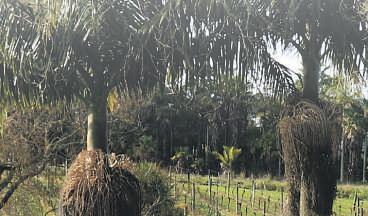



MarsdenEstateWinery ownersCindyandRod MacIvorplantedtheirfirst vinesin1993.Atthetime,it wasonlythethirdwinery inNorthland.Thereare now40.
STEVE MACMILLAN

Marsden Estate produces 2300 cases annually, which totals 30,000 bottles from its 10ha of vines. Winemaker Justin Atkinson produces a range of wines, including chardonnay, cabernet sauvignon syrah, muscat and others.
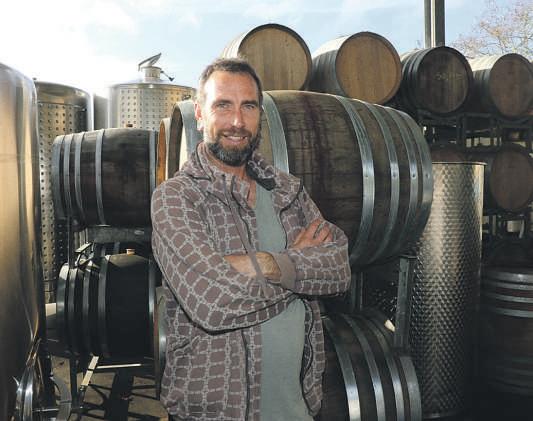
the quieter times In the early days of the restaurant, the MacIvors had seven staff, which has grown with the business to 22.
The restaurant is known for the relaxed atmosphere of its courtyard dining space overlooking the lake and vines, with innovative cuisine that showcases the unique flavours of the region.
“We have been lucky, because ventures like this don’t always work out. We have met some amazing people from all around the world, and we have had a fabulous 31 years. Wine and food are great levellers,” Cindy says.
While they acknowledge that it is a fun industry to be part of, Rod laughs when he suggests Cindy is in the stressful part of the business and he has it relatively easily


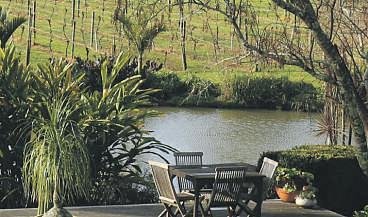
while he kicks back making the wine.
As they prepare to exit Marsden Estate and hand their legacy to someone else, Rod will remain involved in the industry locally, and pass on his knowledge to others starting out or looking for help and advice. He has also been advising a winery in Indonesia on the wine business.
While they have concerns about the Northland wine sector, due to the ageing population among winery owners, and plots of land being expensive to buy, they are hopeful of a turnaround.
“It’s that thing of how you get the continuity of the young ones coming through.”

They say they did it, so raise a glass to others keen to follow their legacy.


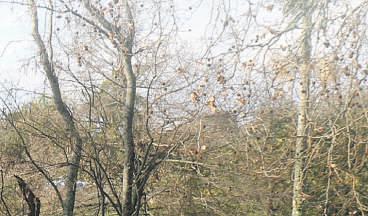






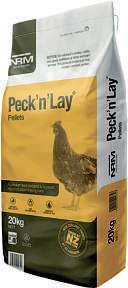



















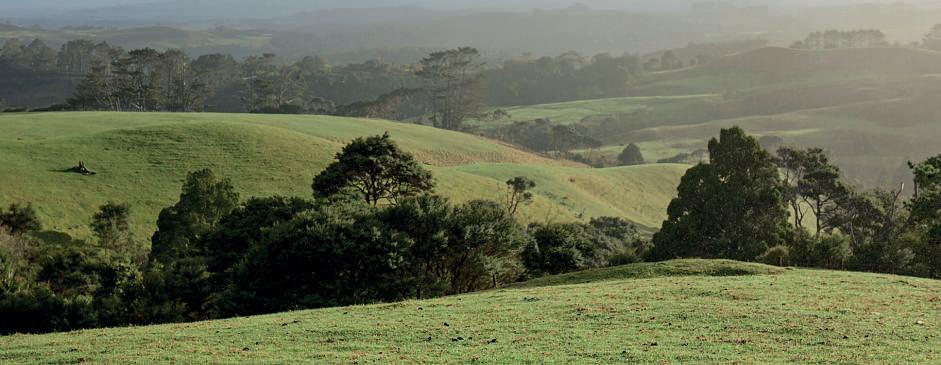




























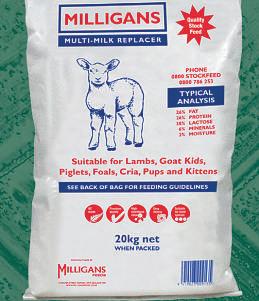





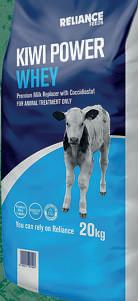




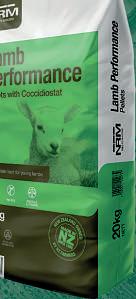



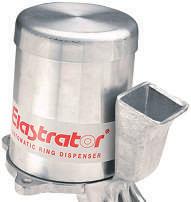








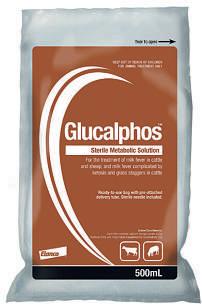






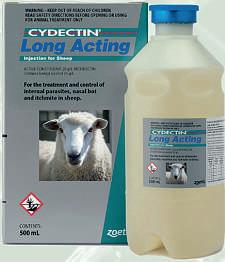








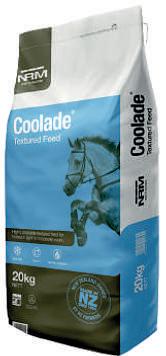











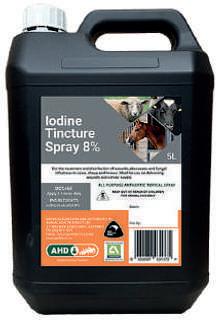



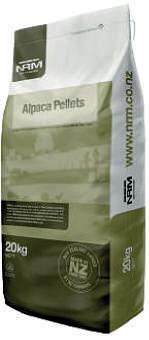










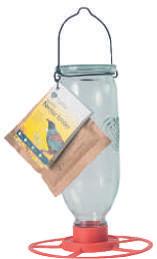







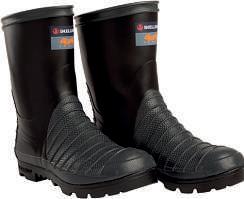

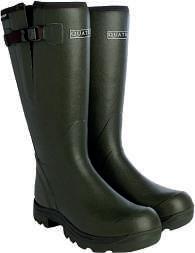
















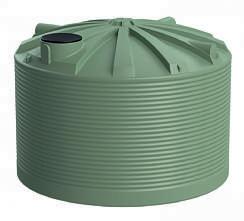






Heather Arnold and Sally Moore
PF OLSEN ENVIRONMENT TEAM MEMBERS
The National Environmental Standards for Commercial Forestry (NES-CF) came into force in the main in November 2023, replacing the NES-PF. The NES-CF introduced carbon forestry into what had been previously a plantation forestry-only regulation. It also included additional rules for harvest slash management and afforestation (and other minor changes)
The regulations apply to any commercial forest area greater than one hectare, with some exclusions.
What is the NES-CF?
The NES-CF covers eight of the core activities carried out in commercial forests – afforestation, pruning and thinning, earthworks, forest quarrying, river crossings, harvesting, mechanical land preparation and replanting.
Other forest management activities are regulated by district and regional/unitary council plans, such as use of agrichemicals. Council plans may also have rules that are more stringent than the NES-CF; for example, to protect outstanding landscapes, and to give effect to other national Resource Management Act (RMA) instruments, such as the National Policy Statement for Freshwater Management.
The NES-CF is based on erosion risk
Underlying the NES-CF is the recognition that New Zealand’s land varies in its

capacity to support commercial forestry activities. Fragile soils and geologies require more careful management than areas of low erosion potential.
An Erosion Susceptibility Classification (ESC) for potential erosion risk is available online. It codes land into four categories of erosion risk: green (low), yellow (moderate), orange (high) and red (very high).
Commercial forestry activities in green and yellow zones are generally permitted. Most forestry activities cannot be undertaken on red-zoned land without resource consent Some activities, such as earthworks, also require consent on orangezoned land with steeper slopes.
Regardless of the ESC class, all commercial forest activities must meet the regulations for the activity to be permitted. If the regulations cannot be met, a resource consent will be required
Notice for permitted activities
There is the requirement to provide
Notice must be provided to the local council for some commercial forestry activities – such as afforestation, replanting, quarrying, harvesting and earthworks –prior to the operation commencing.
BRYA INGRAM/STUFF
notice to council for some commercial forestry activities (afforestation, replanting, quarrying, harvesting and earthworks) prior to commencement of the activity. There are specified timeframes that must be met.
The NES-CF also requires that specific operational plans must be written and the area mapped prior to the operation commencing. This enables the operation to be legally undertaken when it is a permitted activity. The council may require these management plans to be provided to them and may also seek GIS compatible mapping.
The NES-CF provisions in relation to residual harvesting slash are challenging, along with the regulations for sediment discharge and river crossings. Complying with all of the permitted activity standards must be achieved for the activity to be permitted.
Council compliance, monitoring and enforcement officers may monitor certain
NES-CF Erosion
Susceptibility Classification map
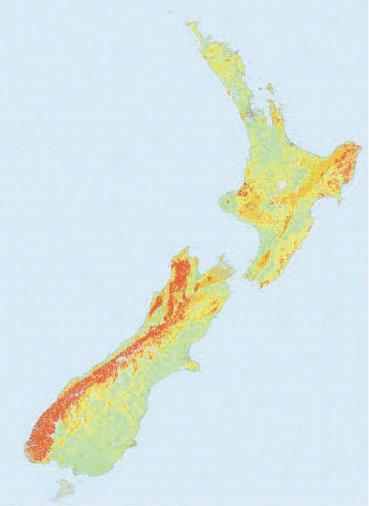
activities and the associated costs may be invoiced to the forest owner/manager.
Where to find help
The NES-CF website provides helpful information: https://environment.govt.nz/ acts-and-regulations/regulations/nationalenvironmental-standards-for-commercialforestry/
If you need help to negotiate the NESCF, we suggest contacting a forestry professional. We have offices throughout New Zealand and can assist, from writing the specific operational plans, providing GIS compatible mapping to writing resource consent applications.

PF Olsen canassist you to betterunderstandhow adding forestryto your farmingmix can improve farm resilience and profitability. Ifyou’ve ever wondered howforestry cancomplementyour farming model,PFOlsen canhelpyou understandwhatareasofyourfarmare mostsuitableand what thepotentialreturnscouldbe.
Farming +Forestry =Farming for thefuture
6560 forafree discussionwitha Forestry Specialist to find out if forestry is a good fit foryour farm
South Canterbury sheep and beef farmer and Beef +Lamb New Zealand director Nicky Hyslop says although the Government is changing rural policies, more sustainable, bipartisan regional environmental policies are needed.
Many farmers breathed a sigh of relief with the change in central government policies following the general election. Many of the policies introduced by the previous government were impractical, unworkable and didn’t achieve the outcomes they were looking for in the first place.
That is why the current government is now seeking to change some of these to address the issues. However, I still hear of frustration from highly engaged farmers who have been proactive in local catchment groups and invested in progressive environmental projects on farm.
That’s because despite national direction to stop applying the likes of the national policy statement for freshwater, some regional councils have not stopped their planning processes and are still doggedly
Meat Industry Association chairperson
Nathan Guy says farmers and the sector have shown resilience in these volatile times.
It’s good to see some cautious optimism in the red meat sector
While times continue to be tough on the farm, at the Red Meat Sector Conference recently, there was a lot of talk about the opportunities ahead
I took heart from the assessment by Ministry for Primary Industries directorgeneral Ray Smith that primary sector returns hit the bottom of the cycle earlier this year and conditions are now starting to improve – although I acknowledge it’s still tough for sheep farmers.
Some positivity is not just important for farmers but for all New Zealanders, because red meat is our second-largest earner of export dollars and employs more than 92,000 people with many in the provinces.
Our farmers and meat processors have demonstrated resilience in the face of strong headwinds.
There is ongoing uncertainty in the current geopolitical climate with the potential for a significant impact on trade – all eyes are on the United States presidential election in November and beyond.
We are closely watching what happens in our key markets so we can respond and adapt as required. However, we are seeing positive signs. For example, red meat sales for May increased 3% with growth recorded in nearly every market.
There is strong demand for red meat in the United States, offsetting the weak demand in China, with the US overtaking China as our largest export market this year. The US beef cow herd is at its lowest in 52 years (mainly because of droughts), which may well see beef export prices and profits increase for farmers and meat companies.
We are focused on protecting our
proceeding with some of the old rules.
Several studies have shown that up to 40% of rivers could not meet the suspended fine sediment national bottom lines even if the catchment was reverted fully back to pre-human settlement times.
To meet this flawed standard would put thousands of sheep and beef farmers out business.
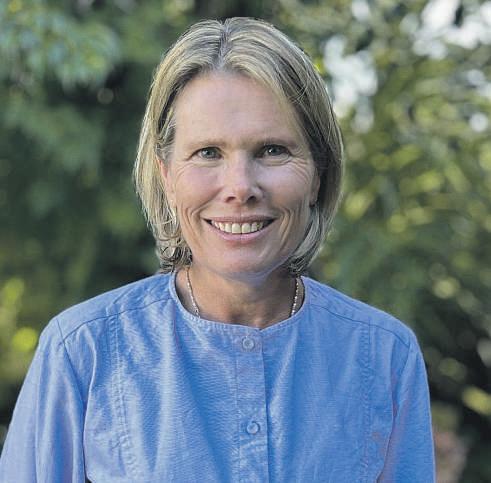
The E coli rules are similarly flawed and based on trying to improve standards from post-flood events, which are also unachievable.
Our low-input sheep and beef farmers have among the lowest environmental footprints in the world, producing natural, nutritious protein that the world needs.
In New Zealand, farmers have been deliberate with our focus on the environment alongside efficient


production, but we cannot be driven into economic peril as this will put our ability to maintain this investment in jeopardy.
Evidential science is crucial – not just

the data that supports a position, but for the context in which that data is gathered, including when and where it is recorded.
What is clear is that a one-size-fits-all approach to regulation does not work.
Regional councils need to work with farmers to develop policy that focuses on addressing issues regionally and at the catchment level
We are not saying that nothing should happen. Farmers are committed to continuous improvements to the way they farm and have made significant progress in the last few years in areas such as winter grazing.
We know that these issues are not going to go away and we want to play our and help set up enduring frameworks stand the test of time and provide certainty for our communities and for farmers.
Policy developed with farmers and supported by evidence, science and economics is critical
While we have a government that is listening, we need to really push harder for more sustainable, bipartisan regional environmental policy Otherwise, when we do see the government change we will simply be back at square one and the pendulum will swing again.
We need solutions for positive change.






hard-fought market share in China. Our first mover advantage as a result of a very successful Free Trade Agreement in 2008 is now under pressure with an estimated 42 countries being granted access for meat products into China.
New Zealand meat companies (with funding support matched from Beef + Lamb New Zealand) are going to lead a Country of Origin marketing push later this year that will help raise awareness of our unique attributes to Chinese consumers.
We are also seeing signs of recovery in other key markets such as Japan and the United Kingdom
The entry into force of the New ZealandUK Free Trade Agreement has made an immediate positive impact on our red meat export value.
In the first year of operation, we have exported $44 million of beef to the UK compared to $12m in the previous 12 months While these numbers are relatively small, the upward trend is exciting. Despite ongoing cost of living pressures

impacting consumer spending habits worldwide, our sector continues to generate more than $10 billion in export revenue annually.
The right policy settings, like getting inflation back under control and cutting interest rates domestically, will be a big morale boost for rural communities
The Government can also play a role in international growth opportunities by opening doors on trade delegations and providing connections.
The Government’s goal of doubling the value of primary sector exports by 2035 will be a stretch target but we love a challenge.
It will require a focus on specific markets, raising awareness, adding value to certain cuts and promoting co-products.
Making strong in-roads into the India market will be a key focus and we welcome the Government’s engagement in that market. We stand alongside the Government to deepen and broaden the India/New Zealand bilateral relationship. We know trade agreements delivervalue.
With the Government’s ongoing focus, tariff costs imposed on the red meat sector’s exports have been steadily declining over the last decade.
That said, in 2022 tariffs cost the sector $197m That’s a lot of money.
In addition, our research indicates nontariff barriers are costing the sector at least $1.5 billion annually, a massive cost. Any gains made to NTBs will be a real positive to the bottom line.
We were pleased to welcome Prime Minister Christopher Luxon, Finance Minister Nicola Willis and Minister of State for Trade Nicola Grigg to our conference and look forward to continuing to work constructively with the Government to grow our sector, to the benefit of all New Zealanders.
It has been a challenging year, and the global situation remains complex and uncertain. However, the past year has demonstrated that the red meat sector has the resilience and resolve to navigate this volatility.
Andrew Stewart is a fourth-generation sheep and beef farmer in the Rangitīkei region. He and wife Kylie also run Rangitīkei Farmstay and The Mudder as successful diversifications on the family farm. He writes regular columns for NZFarmer.
Farmers are busy and life can often throw curve-balls, so sometimes we struggle to attend various events on the rural calendar.
So when I arrived a recent Hunterville vet club seminar and saw a full car park and meeting room, I knew the subject had captured farmers’ attention
The topic was drench resistance and how farmers can make steps to try and combat this massive roadblock now staring many in the face
So for the uninitiated, how did drench resistance came about? It’s really about survival of the fittest
Worms repeatedly exposed to drench over many generations slowly develop the ability to tolerate what once killed them. This adaptation gets written into their DNA and passed on to their offspring. Their cousins who don’t adapt still get killed, leaving the drench survivors to breed with each other and increase in numbers. Using drench over and over as your main way to manage parasites applies selection pressure. It culls susceptible worms and removes them from the gene pool.
What’s left? Sometimes no worms at all. But, increasingly, a few worms of some species survive. Without realising it, you have ‘selected’ for drench resistance.
Hunterville vet Martin Walshe told the crowd that 80% of the farmers should be concerned about drench resistance because faecal egg testing has proven they will have it on their farms. He also stated farmers were no longer just farming their farms,
they were farming the worms on them, and despite everyone’s best efforts, they were here to stay.
He believed the sheep farming landscape was going to change dramatically in New Zealand and urged farmers not to repeat the mistakes of the past by being complacent.
“I actually believe we are going to see about 20% less sheep in the hills in the next five years, and we are going to really struggle to hold our current levels of production,” Walshe said.
Farmers were also told that they couldn’t rely on “new drenches”, to drench their way out of this as resistance to them has already been found on some farms.
The drench companies have also stated clearly there are no more drenches in the pipeline for sheep as many animal health companies have shifted their focus to the more lucrative pet market. So is the sky about to actually fall on sheep farmers’ heads? No, farmers have a number of options that can help address the problem.
Using un-drenched animals, different stock classes and changes in paddock management to create refugia is nowvital.
Refugia involves making sure there are some susceptible worms inside the animal to reproduce
Genetic selection will also become increasingly important and this does not stop at the type of rams that are purchased
It was suggested that replacements that were not holding condition or were daggy should probably be culled from the flock, and the same should happen to any ewes


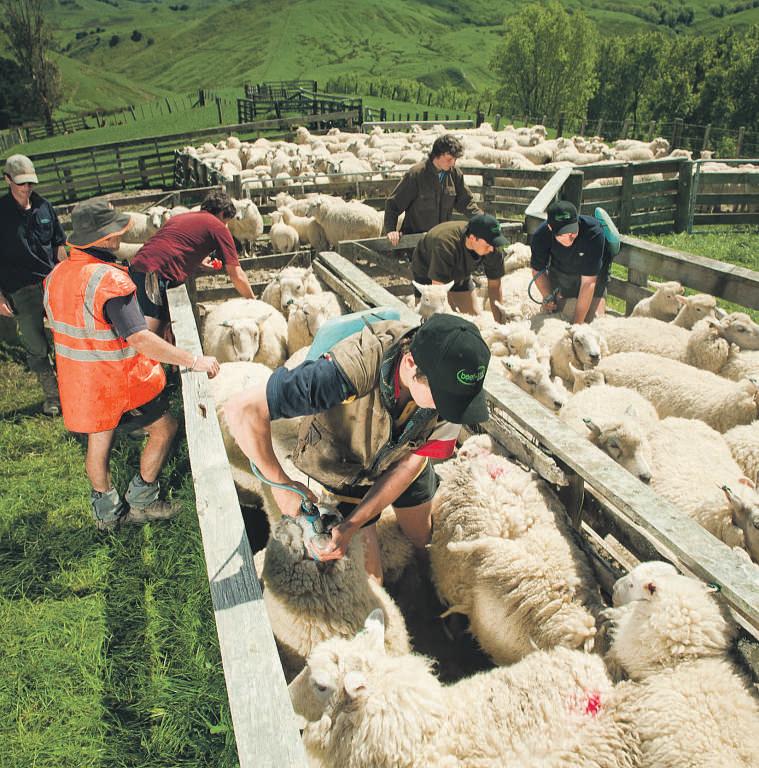
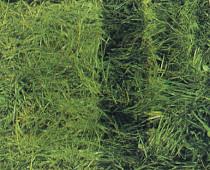
showing the same traits. Over time, that will mean the animals that are more resistant to worms will pass on that genetic trait to their offspring, and that should increase the resistance of the whole flock.
Equally important will be the use of cattle on farms to “tidy up” paddocks after sheep have grazed them. As cattle are not susceptible to the same types of worms, they can vacuum up the contaminated pastures and leave them cleaner of worms than they were before grazing.
Walshe predicted the national cow herd would probably increase as farmers lifted cattle stock numbers to help with the resistance problem.
Cropping should also be considered wherever possible as the requirements for drenching lambs grazing crops diminishes significantly compared to grazing on grass.
Farmers should be looking at the size of their paddocks as smaller paddocks enable better control of pasture quality and that, in
turn, will enable better worm management.
History has also shown that one of the key methods of reducing worm burdens is by selling as many lambs as possible during the weaning process.
Once they are weaned, and requiring monthly drenching in summer and autumn, lambs can shed a staggering number of eggs onto pasture, which is where a large part of the resistance problem starts By selling lambs earlier, farmers may not get the prices they were hoping for, but they will make a significant contribution to lowering the worm challenge on farm.
While there is general agreement that the drench resistance problem is here to stay, there are positive steps farmers can take to reduce the impact and slow down the problem. But the most important message was that the time for acting is now, so not doing anything is no longer an option.
“She’ll be right” just doesn’t cut it anymore.
Dose alldogswho reside near sheep with Praziquantel monthlyoratleast 48 hoursbefore visiting sheep, to preventsheep measles.
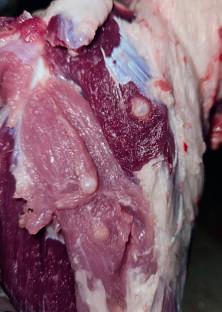


If yousufferfrom...
Aches &Pains?Arthritis? HeartDisease? Inflammation? Joint Pain? Migraines? Macular Degeneration? Diabetes Injuries? ColdHands&Feet? Fibromyalgia? Anxiety? RELEASE, REBUILDand RENEW your whole body withStem Cell Nutrition
•The National Institute of Health has identified74treatablediseases using Stem CellTherapy
•Stem Cells arethe only cells in our body capable of repair &renewal
•Our products are100% natural &clinically proven
•2capsules can stimulate your bodyto release 35% moreStem Cells

Testimony from John Walker
Iama retiredfarmer& while thefamily went on walks &excursions Ifound myself sitting on apark bench or in acoffee shop as Icouldn’tkeep up with them. Iwas stooped &had alack of confidence ¬ very mobile after having four knee operations &wouldn’t go anywherewithout my walking stick.
After starting Stem Cell Nutrition two months later my spirits liftedand Inolongerneed my walking stick &I am standing up straighter


•Deck size 1.5mtr x1.2mtr
•5mm galvanised wovenmesh floor
•Galvanisedbox section chassis
•Aluminium tread plate body
•Back door slides as well as drops downtomake aramp
•Back of crate is easily removed
•Tapered trailer wheel bearings.
• Extras available -centregate,trays, mesh drawbar step, crook holder.
•Custom options available.


Built Hecton strong our Sheep LoadingRamp is available in single (400mm inside width) or double (650 inside width) &can also be used for calves. At 5.7m long theramp easily reaches the third deck tier of transportingtrucks.
Solidly built from DuraGalv box section, this mobile ramp includes 14” wheels, rated to 1500kg, heavy duty auto locking winchfor safety,removable draw barand coupling, andnicely finished Galvanised colour steel sheet and alloy trim. Decking made of tanalised timber for longevity. Walkway includes asafety conscious safetyrail thatruns the complete length of the ramp.
This is avery well balanced and finished product, easilylifted&maneuvered to attachtoatow ball and is the ideal product for use around the farm or between properties.

We haveastrongreputation for buildingrobust trailers that cantakealot of punishment. Our flat deck road trailers areconstructed from quality galvanised steel, heavy duty components and road ready. Completed with sides, front andrear tailgates, braked,jockey wheel, lights and fittings, WOFand rego. Crates available andcustomised to the size youwant.

● August 13, 14 and 20; B+LNZ Wormwiseworkshops, Patoka,TutiraandTararua
In this workshop, the latest information and research on internal parasite control is presented. The integrated pest management system outlining the play-off between parasite control and drench resistance will enable participants to make informed choices for their farming business system
Info at beeflambnz.com/events
● August 15 and 21; B+LNZ BetterRamBuyingDecisions workshop, GisborneandHavelockNorth
Want to make better ram-buying decisions? Ram-buying season is almost upon us again and this workshop aims to provide farmers with the basic principles of genetics to consider when selecting rams. It will also showcase some of the tools available to help farmers with their selection. Registration is essential Info at beeflambnz.com/events
● August 16; B+LNZ
RuralWomen’sFinancialSuccess seminar:Empoweringyourfuture, Waikaretu
Beef + Lamb New Zealand has joined Gallie Miles and Craigs Investment Partners to bring you this workshop. Registration is essential. Info at beeflambnz.com/events
● August 19, 26 and September 2; B+LNZ
CentralOtagoFarmingForProfit SilverLiningwebinars
Learn how to improve efficiency, boost
farm profits, and enhance your future outlook in this practical and insightful webinar series. Delivered across three webinars.
Info at beeflambnz.com/events
● August 19; B+LNZ
Webinaronscienceandpolicy solutionsforfreshwaterhealth
Find out more about the issues relating to the independent review B+LNZ released on July 25 on key freshwater targets. This webinar will cover the review’s findings and recommended policy solutions. Registration is essential.
Info at beeflambnz.com/events
● August 20 to September 5; B+LNZ
2024DirectorRoadshow, variouslocations
Hear insights and updates relevant to you and provide input to help shape the future of B+LNZ and our sector.
B+LNZ is holding a series of informal sessions around New Zealand from July to September, covering a variety of topics. These sessions build on last year’s nationwide feedback events and are part of B+LNZ’s commitment to getting out to listen to farmers.
Info at beeflambnz.com/events
● August 20, 21 and 22; B+LNZ B+LNZandFMGFarmSafety ManagementSystemworkshop, Kerikeri,WhangāreiandWellsford Come along to a workshop – you’ll get a free copy of the Safety Management System and will learn how to apply it on your farm.
Info at beeflambnz.com/events
● August 21; B+LNZ TaranakiFarmingForProfitfieldday: Futureprosperityandprotectingyour toppaddock,Inglewood Join B+LNZ for its annual off-farm celebratory evening. Championing New Zealand farmers and hearing from speakers who will share insights to enhance your farming systems and “top paddock”. Registration is essential. Info at beeflambnz.com/events
● August 22; B+LNZ CoastalOtagoFarmingForProfit workshop:Improvingsheep productionunderparasitepressure, Ōamaru
The aim of this session is to promote appropriate stock management especially sheep/beef systems and under parasite challenges.
Info at beeflambnz.com/events
● August 22; B+LNZ BetterBeefBreedingworkshop, Waikato
This workshop is designed to help you make good decisions about bull buying so you can add value to your farming system.
Info at beeflambnz.com/events
● August 22; B+LNZ WhanganuiFarmingForProfitday: Outside-the-boxthinkingtothrive, Upokongaro Amid-afternoon, off-farm event featuring Rita and Dave Hammond, farmers from the foothills of Mt Ruapehu and owners of Sustaina Grow, an ethical wool garden business Info at beeflambnz.com/events
● August 26; B+LNZ OpotikiVeterinaryHealth CentreWormManagementand Reproductionevening
Hear from B+LNZ’s Wormwise Programme manager Ginny Dodunski about practical examples of how farmers are growing out youngstock while using drench sustainably.
Info at beeflambnz.com/events
● August 27, 28 and 29; B+LNZ FeedSmartworkshops, Taupō,MāhoenuiandFeilding
This workshop teaches participants to assess the quality of feed and estimate its metabolisable energy, plus introduces you to some handy tools. Info at beeflambnz.com/events
● August 28 and 29; B+LNZ AgriInnovationsummit:Cultivating newrevenuestreams, MethvenandAlexandra
Join us at the AgriInnovation Summit, a pioneering event focused on on-farm diversification. This gathering is designed to empower farmers with innovative strategies to reduce costs and generate additional income.
Info at beeflambnz.com/events
● August-September; DairyNZ BrunchOnUsgatherings, variousdatesandlocations
Attend one of DairyNZ’s Brunch On Us gatherings, designed to bring our awesome rural community together. Whether you’re knee-deep in dairy, beef, sheep, horticulture or honey, this event is for you and your family!
Info at dairynz.co.nz/events












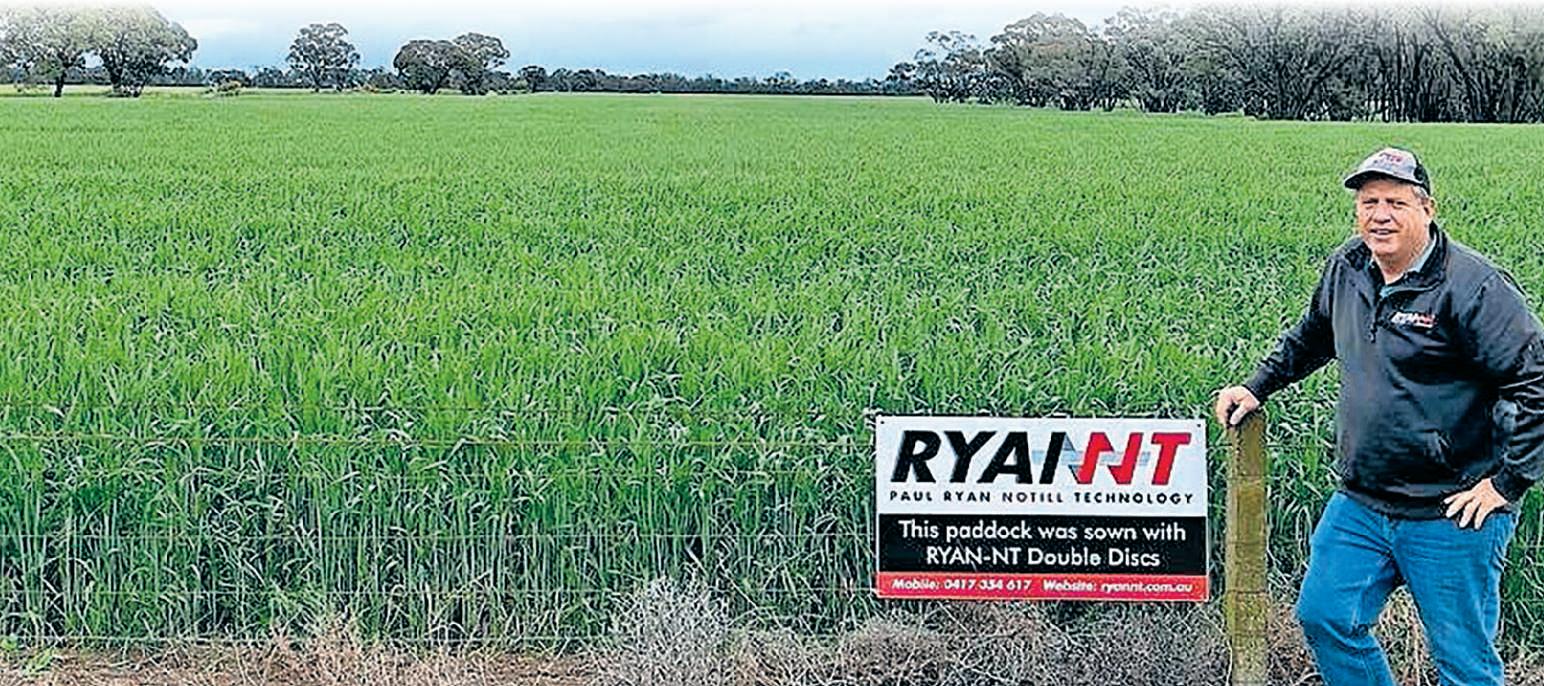













RYAN-NT’s retrofit double disc assistsyou in planting into trash. We now have amodels to suita Duncan & Aitchison Drill.
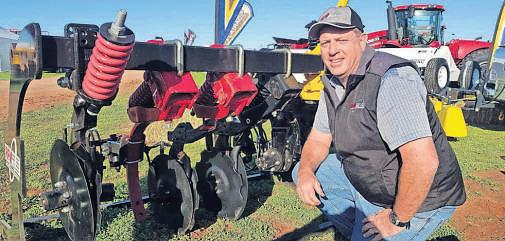
Unlike conventionaldouble discs, our discs have an offset axle design where the serrateddisc is forward of the plain disc.This allows betterpenetration and cutting versusaside-by-side system. The discs are amassive 18” for ease of rolling, have plenty of height, and keep the bearings out of the soil. The axles are 30mm and use Timken tapered bearings. The disc legs fit to a robust 4001b Tyne Trip, allowing them to handle the roughest terrain. In addition, the Ryan system has tungsten mud scrapers and front and rear seed boots

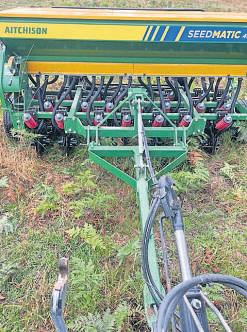


Farming recruitment platform Ag Assist has expanded to provide help for more farmers during busy periods.
By Eve Hyslop.
Stu Melville’s day ahead in the cattle yard was looking a lot longer when he was down one worker last winter. The spring ahead didn’t look much better without an extra hand.
That was until he remembered he had Ag Assist in his back pocket. Within two hours, he’d sent a call out to a local worker, and she had arrived on farm.
“It certainly helped me out big time. It can benefit a lot of farmers that can’t necessarily afford a full-time worker but it’s those periods where they only need someone for a day, for those one-man units,” Melville says.
Ag Assist is a community-driven platform, delivered through a website and app that connects farmers in need of labour, like Melville, with local workers.
Farmers can publish job listings on the platform for locals looking for one-off, short- or long-term work.
University students looking for experience, retired farmers keen to continue scratching their farming itch, and seasoned professionals looking to extend their skillset have been provided with work on farms across Canterbury.
Jobs are listed by farmers on Ag Assist’s website and app, which individuals looking for work can apply for and connect with farmers. It’s connected more than 140 farmers with workers, and about 20,000 hours of work have been logged through the platform.
Now, Ag Assist has officially launched its platform nationwide.

The idea began when border closures during Covid-19 left farms across the country with a labour shortage.
Approaching the busy months of calving, dairy farmer and founder of Ag Assist Tony Dodunski needed to fill gaps in his staffing.
“Support local” was a motto born from Covid, and applies not only to commercial businesses but also to farmers like Dodunski, who have to utilise their local labour supply.
“We really had to think about how we could access local staff That was a big factor to the start of Ag Assist,” he says.
Dodunski had done a bit of reading up on how technology had “unlocked different parts of society”, much like Uber and Airbnb.
“The idea was born out of thinking, ‘How do we access and mobilise the subset of society that traditionally haven’t been able to commit to full-time work?’. And the only way we could really do that was with technology,” he says.
Dodunski says he is expecting the platform to be of great help during the lambing season, to help address labour shortages.
Any farmer knows that spring lambing will only run smoothly if every base is covered That includes right from the farm gate to inside the house.
“There’s been domestic jobs posted, to cook meals over calving and lambing or help out with the gardening and take that pressure off during the high labourintensity period,” Dodunski says In simpler terms, Dodunski describes the platform as a mixture of Uber, Trade Me and LinkedIn for farming.
“From a farmer point of view, you can post your job orview what we call the talent marketplace, so you can see workers in your area within a 120km radius,” Dodunski says.
At the completion of the job, farmers and workers can leave comments, a star rating (out of five) and a health and safety rating on the app to ensure their wellbeing and performance are up to scratch.
Once the busyness of winter and spring had calmed down, Darfield farmer Melville decided to take on a full-time worker.
Bronson Horrell was the man for the job, having already lent Melville a hand during spring through Ag Assist.
Horrell’s helping hand has allowed Melville to find more time to take a step back, spend time with family, or coach his weekend rugby teams
“It’s actually allowed me to put more time into family and just get off farm, and realise that there’s more to life than farming or else you end up working yourself to the bone,” Melville says.
Not only does the platform support farmers, but also those who make up their farming community.
Ag Assist has donated hi-vis vests to local schools.
Dodunski says the next steps are to reach the wider food and fibre sector beyond sheep, beef and dairy farming, and there are even plans to reach overseas customers.
Take a two-way rating system, worker profiles, nearby location services and a job marketplace, and you have Ag Assist.
“From a worker’s point of view, you go online and create a profile, and you’re notified of any jobs that farmers have posted in the region.





Insetabove:DarfieldfarmerStuMelvillehas hadmoretimeoff-farmandinhiscommunity sincebeingintroducedtoAgAssist Insetbelow:AgAssisthasprovidedmore than140farmerswithlocalworkerslike KaylaCaldertolendahandon-farm. AG ASSIST







Spring is a rewarding, but challenging time when lambing comes around, so it is important to get your ducks, or rather lambs in a row, to provide them a healthy start to life.
By Eve Hyslop.
While many farmers in the country are prepared and have started lambing already, there are some who are new to the game and a few things can go unchecked.
To ensure a healthy start to life and a productive flock for years to follow, farmers need to consider the lambing environment, nutrition care with animal health and that a vet is always a phone call away.
In the paddock
Lambing all starts with the environment the ewe is in when birthing the lamb.
The lambing paddock should be easy to monitor and provide shelter so the lamb and ewe can be protected from harmful wind, rain, sun, frost and damaging temperatures.


Main:BeefandLambNew Zealand’s2023lambcropreport showedthan21millionlambs werebornin2023,provingabusy seasonaheadforsheepfarmers.
VANESSA LAURIE/STUFF
The paddock shouldn’t be one with steep slopes or gullies as lambs can slip or roll down hills which leads to mismothering, while heavily pregnant ewes can become casted on difficult terrain. If these kinds of paddocks cannot be avoided, make sure the out-of-sight areas can be checked regularly and ewes can be monitored from a distance.

Colostrum is essential to a lamb’s growth and immunity. Leading up to weaning, the volume and frequency of milk fed to a lamb should be decreased.
BRADEN FASTIER/ NELSON MAIL
Distance is key, which goes hand in hand with ‘quiet’ and ‘calm’. Sheep are private animals when lambing, so they should not be disturbed. When patrolling paddocks, it is important to keep dogs away at all times, monitor sheep from afar and avoid driving through, says Will Halliday, Beef + Lamb New Zealand senior adviser for biosecurity and animal health.
If a ewe is spooked just after or at the time of lambing, she may abandon the lamb. In cases where mismothering occurs, a space for orphaned or sick lambs should be prepared to keep them in a warm, draught-free environment with clean straw and ventilation.
The main event
As a ewe approaches lambing, changes in its udder and vulva are often seen and the ewe may look restless and separate from the group. This will progress into active straining and contractions, with the water bag becoming visible and bursting. Within 1½ hours of the waterbag being visible, the lamb should be born.
While it is important to know all of this information, it’s crucial that this should be seen from a distance.
Interference should be limited as this may disrupt the birthing process. It should only occur for the following reasons:
■ If the lamb is not born after 1½ hours of the waterbag being visible;
■ The ewe becomes lethargic;
■ Straining with no further signs of birth for an extended period;
■ The foetus is positioned the wrong way;
■ The uterus is twisted or poorly dilated.
Avet should be contacted if you are concerned with how the lambing is going or extra assistance is needed.
Should you have to intervene, be sure to remember your hygiene, energy drench and lubricant. Be wary of how much force is used.
Keep hygiene front of mind. Wear shoulder-length gloves and keep them as clean as possible. Not only is this for the health of the ewe and lamb, but also yourself. Halliday says that more hospitalised cases of leptospirosis have been reported in recent years – a stark reminder to think again.
“It’s transferred through body fluids and it makes you very sick and potentially hospitalised. There’s a potential for organ failure and liver damage especially.
Farmers and meat workers are generally over-represented in the statistics.”
Ewes that need help when lambing should be given an energy drench to help top up her energy and recuperate what she has used during the lambing, as well as prevent ketosis.
When assisting a ewe to lamb, plenty of lubricant should be used and no more force than the strength of one arm should be exerted
Within a few hours of birth, lambs left on the ewe should be actively drinking milk from her. This initial drink of milk or colostrum is essential within the first 12 hours of life.
Colostrum is critical to a lamb’s growth, protecting it from infections for its first four to six weeks.
“It’s absolutely critical for that lamb to get a good drink of colostrum and the reason being is that it’s full of energy,vitamins and immunoglobulins that build up that lamb’s immune system,” Halliday says.
If a lamb is orphaned or abandoned, it should be picked up and given colostrum as soon as possible. Without colostrum from its mother, it can be provided from milk powders, a freshly lambed ewe or even from cow colostrum.
Colostrum should be given in 15% of the lamb’s bodyweight – every two to four hours in the first 12 to 24 hours. This could be 600 millilitres for a 4kg lamb, split across four to eight feeds.
Freezing colostrum in the leadup to spring is a great way to keep it on hand.
Defrosting colostrum must be done with care, never heating it above 45 degrees Celsius or else you risk damaging the antibodies in the milk
If the lamb is sluggish or isn’t drinking, it may be necessary to hand or tube feed colostrum. This could also be necessary when a ewe has more than two lambs as it only has two teats to feed.
When introducing the lamb to hard feed, Halliday says it is important not to be switching or bringing in new feeds suddenly.
“Different feed needs different chemicals and enzymes in the rumen to break things down the microbes that are in the gut might not necessarily be the optimum ones for breaking down the feed you’re providing.”
Docking and castration
When a lamb reaches two to six weeks old, its tail should be removed through docking. This reduces faecal contamination and avoids health issues such as flystrike.
Castration of the male lambs is usually done at the same time.
Docking and castration involves putting a tight rubber ring around the tail for docking and testicles for castration. This causes the blood flow to stop in the tail or testicles, which will fall off within a week.
When docking, it is important to not ring the tail too short otherwise you risk an animal welfare offence. If there is discharge or reddening around the tail or the lamb is lethargic or off feed, contact a vet.
These are painful procedures for lambs, which can show signs of discomfort by lying down, kicking their back legs and bleating for several hours. This is normal, but if their condition worsens, pain relief can be provided by a veterinarian, as well as other medications to prevent infection. These can be given in the form of a local anaesthetic or anti-inflammatory medication.
For optimal pain relief, you can make a booking with yourvet for your lamb to go under a local anaesthetic.
Weaning
At 8 to 12 weeks old, or when it is consuming at least 200g of hard feed every day, a lamb should be weaned off milk. To do so, the volume and frequency of milk should be decreased over the weeks leading up to weaning.

Parasite management and vaccinating
Parasite management or drenching for gastrointestinal parasites or worms and vaccinating should begin about the same time as weaning. Lambs are more susceptible to worms than adult sheep so in order to build immunity, they need to be protected from parasites regularly. This should be about every 28 days over four to five drenches from weaning.
“This is a good opportunity to give them a cobalt vaccine, a B12 and it might be the right time to give them their booster for fivein-one,” Halliday says.
From sickness back to health
While in-lamb, Halliday says ewes can be susceptible to pregnancy toxemia or ‘sleepy sickness’.
“The multiple fetuses she’s rearing may be taking up so much room inside the sheep
that she can’t physically eat enough food to maintain her own metabolism.”
This can be prevented through supplement feed with extra energy or treatments such as Ketol. Lambs are vulnerable to multiple diseases in their early stages in life. Some to look out for are scours, hypoglycaemia, navel ill and joint ill.
Scours occur for a variety of reasons, from nutritional to infectious disease.
Lambs have small reserves, so fluid and nutrient losses can lead to dehydration and death if not properly treated with lambspecific electrolytes. If a lamb is off feed, not drinking, lethargic or has blood in their faeces, a vet should be notified.
Anti-inflammatory treatments can turn around the health of a scouring lamb significantly. Consult yourvet on using such treatments.
If a lamb is showing signs of weakness, it may have low blood sugar or hypoglycaemia. Honey or dextrose syrup can be smeared on their gums to give them glucose. Lambs that can still stand can be tubed with colostrum, then dried and warmed slowly. If warmed too quickly without being fed, the lamb burns glucose faster, risking death.
The navels of hand-reared lambs should be sprayed with iodine or betadine after birth to prevent bacterial infections. While you can’t treat every lamb, it can help to prevent bacterial infections. If the cord is wet, swollen larger than a pencil or there is any discharge, notify a vet.
Joint ill can also be a result of navel infection, scours or pneumonia. It involves one or more joints which become hot and painful, causing the lamb to suddenly appear lame. This needs to be treated aggressively with antibiotics and anti-inflammatories with assistance from a vet.
Information provided by Massey University, unless cited otherwise.



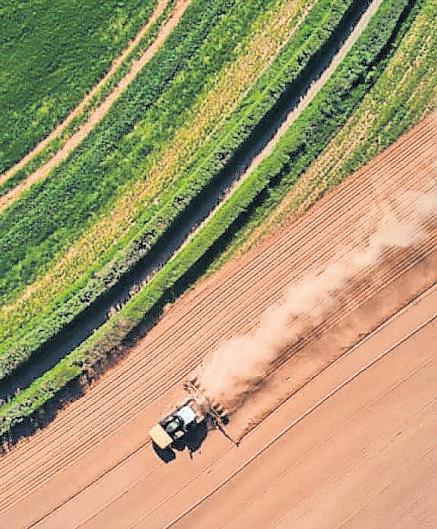

A wool education programme developed by industry leaders and academics is being rolled out to architecture and product design schools.
By Eve Hyslop.
The benefits of wool have reached the lecture theatres of six major architecture and product design schools in the form of a new tertiary education programme.
The programme, named Wool Dynamics, was developed by Campaign for Wool New Zealand (CFWNZ) and authored by Professor Frances Joseph and Peter Heslop, from Auckland University of Technology (AUT).
It is being trialled in the architecture and product design schools at Victoria University, AUT, Ara Institute of Canterbury, Otago Polytechnic, University of Waikato and Massey University.
The programme will be taught to students through learning modules and implemented into architecture and product design courses through research and case-study content in lectures and tutorials.
Rather than an agriculture-based programme, Kara Biggs, general manager
at CFWNZ, says it will focus on the use of wool in building and product materials.
“For architects, it’s about specifying more wool into buildings. And for product design, it’s about creating new uses, new products and innovating with wool,” Biggs says.
With a strong academic and practical background in materials, Joseph can see a number of opportunities for wool.
“I’m thinking of interior lining products that, unlike chipboard, have insulating qualities, for instance. Architects are only limited by the materials available to them.
But there’s a lot of new technology coming onto the market that utilises the inherent properties of wool.”
Joseph hopes to see the use of wool in buildings and products replicated with other local materials, to help give cheaper imported products that extra nudge out.
“I’d love to see New Zealand not only producing the best wool in the world, but manufacturing and using products made from the best wool in the world.”
The programme, Wool Dynamics, seeks to encourage students to opt for wool in building materials when they enter the architecture and product design industry.
CAMPAIGN FOR
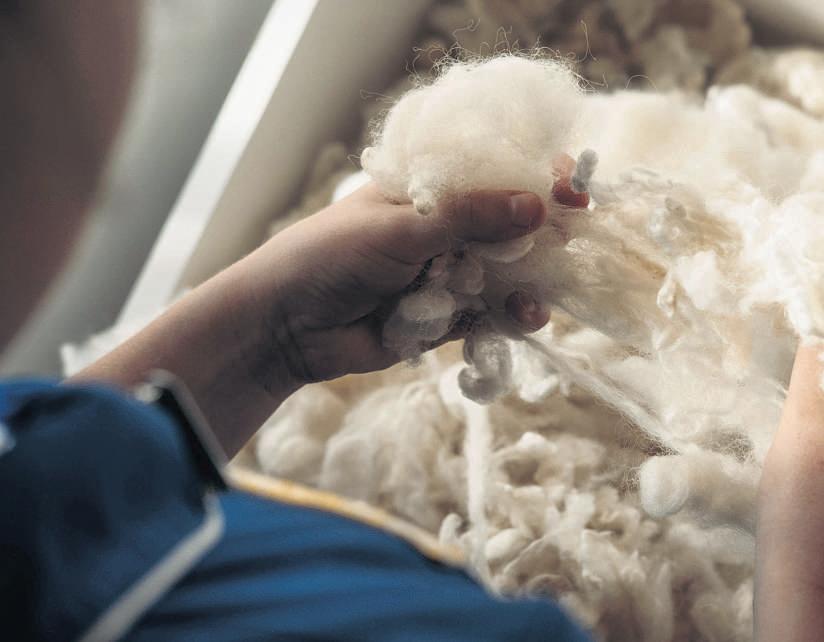
A lot of behind-the-scenes work went into the programme’s creation, which included gathering information from brand partners, tutors, lecturers, students and case studies on the benefits of wool and the use of it in architecture and product design.
“It’s a huge piece of work that, if successful, can be rolled out to a number of tertiary institutions across the country. It also creates a clear roadmap for students keen to be part

of the wool renaissance, make a positive impact on our planet, or create using wool,” Biggs says. The programme is expected to breathe new life into the wool education space and expose more students to wool who wouldn’t have been otherwise.
Biggs said initially, CFWNZ wanted to introduce a course students could choose to study, but switched to modules that could be implemented into a course to enhance their reach.


“Then we actually realised, that’s only getting to the students that are already interested in wool. What we need to do is expose every student to wool so that they’re like, ‘Oh, my goodness, this is the thing’.”
As a professor at AUT, Joseph is thrilled to place the programme in front of her students.
“Introducing architecture and product design students to the magical properties and potential of wool will really help continue
the innovation trajectory for the wool industry.”
With moisture-wicking, insulating and temperature-regulating properties of wool in mind, among many others, Biggs says that students will enter their careers with innovative knowledge.
“If they needed to create an architectural space that has sound absorption, then they will come to their own sort of ideas and say, ‘Actually wool is amazing at doing that, because we learned about that in our course.’
“For a product design student, the problem might be filtration, trying to get microplastics out of Lake Wānaka, for example. And so we know that wool filters are much better, and obviously they’re natural versus plastic filters.”
It could even be used in occupational therapy, hospitals or rest homes, Biggs says, reducing the impact for falls and increasing comfort. Pet kennels and beds could also find it useful for odour resistance or warmth.
“There’s about 20-plus different performance benefits of wool So when questions are asked, let’s look to wool as the super fibre for that,” Biggs says.
Biggs says that she and the team at CFWNZ feel certain that the programme is a step towards a productive and osperous future for wool. “We’re working really hard to serve our strong wool community, create opportunities and allow the next generation to imagine, innovate and make real progress for our strong wool sector.”

The pilot programme is set to run for the rest of 2024 and after evaluation and improvements, CFWNZ aims to roll the programme out to tertiary education providers nationwide in 2025.
By Madeleine Powers.
Aspiring farmers will have the chance to experience the Growing Future Farmers (GFF) programme at Waikato and Hawke’s Bay this month.
The experience days give young people, parents and caregivers the opportunity to meet the farmer trainers and students currently on the programme, and get an understanding of what skills they would learn.
need to get more young people into the sheep and beef industry.
“The two founders, Tam and Dan Jex-Blake, set it up because they felt there was a need for farmers to reinvest in the future of farming.”
Paul said the programme gives young people a pathway to get into the industry, who might not otherwise get that opportunity.

“Most of our graduates get into roles that are $45 to $60k at the age of 18 or 19, in young shepherd roles or farmhand roles.
“So that ability to step out of a two-year programme with no student debt or loan, with all the skills that they can take on to getting into employment, it’s a positive outcome.”
The two-year on-farm programme is open to youths aged 16 to 20 from rural and urban backgrounds, and provides a gateway between school and employment in the rural sector.
Students live and work on a beef or sheep farm for two years under the supervision and mentorship of a farmer trainer. During the two years, students learn practical on-farm skills from shearing and 4WD driving to animal health and dog handling.
Students are given two puppies to train over the course of the programme, which they get to keep on as their own working dogs if they complete the two years.
Wendy Paul, GFF chief executive, said the programme aimed to help meet the
Past students say the programme has been life-changing, increasing their self-worth and giving them a pathway into the industry.
Students receive a living allowance, and have access to a range of subsidised support including accommodation, wi-fi, equipment and clothing.
The GFF experience days
■ Waikato: August 15 at Puketutu Woolshed, 1166 State Highway 30, Te Kuiti
■ Hawke’s Bay: August 22 at Stag Hill Trust at 1168 Elsthorpe Road, Otane
The GFF experience days will run from 10am to 1pm.
Register at growingfuturefarmers.co.nz.


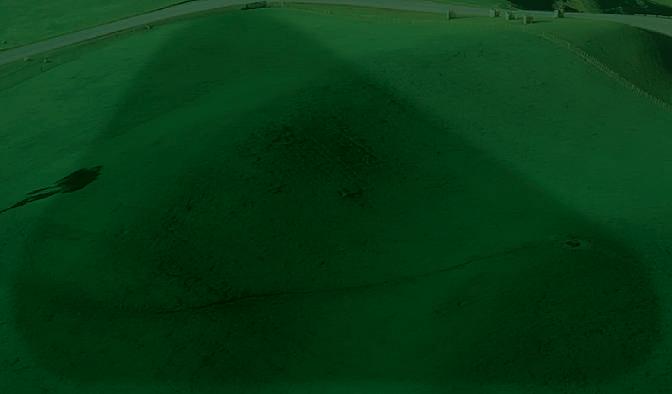


This article is part of the Safety Alert series, learnings from real-life incidents that have happened on farm. They are part of Safer Farms’ Farm Without Harm strategy and action plan, which has been developed by the agriculture sector, for the agriculture sector.
What happened? A rider was mustering on his quad in lowvisibility and wet conditions. He went down the wrong spur. He chose to backtrack along a ridge he was unfamiliar with While travelling, his back right wheel skidded and slid down a hollow, causing the bike to roll. The bike was carrying a trailer with two dogs and this additional weight contributed to the loss of control.
The bike rolled over the rider and came to rest on its side. The rider was protected from being seriously harmed by the Lifeguard rollover protection systems.
Discussion points
Managers are asked to talk to riders about the following issues:
■ What could the rider have done if he could not see the route ahead of him? What would you do in lowvisibility and if you didn’t know the route?
■ Are there ways to improve the visibility of trails? (eg route markers/poles along ridges/safe areas or sticking to fence lines)
■ When is it appropriate to drop trailers?
■ What guidelines do you have on farm for the use of trailers and quads?
Considerations
Managers are asked to consider:
■ When was the last time your team members were assessed as competent on quads? (including those who don’t ride them regularly)
■ When did you last conduct refresher training on quads? When is the next opportunity?
There has been massive farmer interest in the Crush Protection Device (CPD) incentive programme for quad bikes which encourages farmers to install CPDs on their quad bikes.
It has been over-subscribed, hitting its initial target within 38 hours of the incentive offer being launched with 110 farm businesses from across the country signing up to the pilot scheme, which offered a discount of up to 75% on CPDs from retailers Trax Equipment and Quadbar.
The initiative is being driven by the industry-wide initiative Safer Farms in conjunction with partners Rabobank,


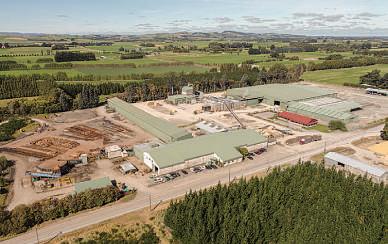


ANZCO Foods, LIC, Craigmore Sustainables and PGG Wrightson as part of the Farm Without Harm strategy.
Farmers from every region of New Zealand applied for the discount vouchers, with the largest uptake in Canterbury, followed by Manawatū Whanganui. The highest number of applications came from sheep and beef farmers but there was still significant interest from dairy farmers. Most applicants stated that this would be their first CPD purchase.
In addition to the first 110 farm businesses, about 100 more are on the waitlist.
Safer Farms is exploring options to fund CPDs for these farmers too.
Wairarapa Farmer and Farm Without Harm ambassador Lindy Nelson says the outstanding response showed how much farmers value safety and want to make use of fail-safe solutions.
“This is about being responsive to the practical needs of our farmers. Our members
and retailers invested in this incentive programme to remove the cost barrier and this pilot has clearly struck a chord with farmers. Farmers clearly want to make their quad bikes safer.”
Who are we?: Safer Farms is a membership organisation that recognises the whole sector benefits from improved health and safety. It brings together farmers and senior leaders from agribusiness, agricultural industry groups and government.
Safety Alerts are a great way to learn from incidents that have happened on other farms. Ask yourself: Could this happen on my farm? What do I have in place to prevent this from happening? How can I implement these learnings?
New Safety Alerts are added regularly. To see others, or subscribe to have Safety Alerts emailed to you, see farmwithoutharm.org.nz/ safety-alerts.







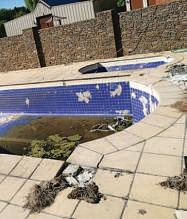








The team at Employsure discussed farming apprenticeships and came up with these handy tips for farmers.
WHAT YOU SHOULD KNOW
New Zealand’s agricultural sector is one of the largest contributors to the nation’s economy through exports like dairy, meat and produce. Farming apprenticeships play a crucial role in ensuring this success continues, not just for the industry, but for the country’s future. Similarly, businesses that employ apprentices are likely to see positive impacts both in the short-term and in the long run. We spoke to Peninsula New Zealand’s advice team to learn more about apprenticeships, their benefits, and what they involve.
Q1: What types of agriculture and horticulture apprenticeships are available in New Zealand?
Classified as primary industries in New Zealand, there are more than 30 types of agricultural, horticultural and farming apprenticeships, spanning specialisations like dairy farming, beekeeping, fruit

production and wool harvesting.
Apprenticeships can be as broad as agriculture: breeding livestock farming, and as specific as wool harvesting in machine shearing crossbred wool. The full list of apprenticeships available in New Zealand can be found at careers.govt.nz – a website run by the Tertiary Education Commission, or TEC for short.
Q2: What are the benefits of employing an apprentice?
Employing an apprentice offers a multitude of benefits. By investing in an apprentice, you are not just hiring for the present; you are cultivating a skilled workforce for the future Apprentices bring fresh perspectives, often leading to improved processes and increased efficiency.
Taking on an apprentice enables you to manage your staffing levels more effectively. As apprentices learn more and undergo professional development, they’re more likely to be motivated and stay loyal to your business. Similarly, helping your existing workers to enrol in an apprenticeship is a good way to reward them for their hard work, dedication and drive, supporting
Taking on an apprentice enables you to manage your staffing levels more effectively
employee retention.
Therearemore than30types ofagricultural, horticultural andfarming apprenticeships, whichcanbeas broadasbreeding livestockfarming andasspecificas woolharvestingin machineshearing crossbredwool.
apprenticeship and develop a training plan.
Q4: What are the key differences between employing an apprentice compared to a regular worker?
Apprentices get the same entitlements as other employees, such as annual holidays, sick leave, and public holidays where eligible, but they typically receive a lower pay rate than experienced employees during their apprenticeship.
A Kiwi apprentice cannot be younger than 16, whereas there is no standard minimum working age in New Zealand. Instead, there limits to what work children of certain can do.
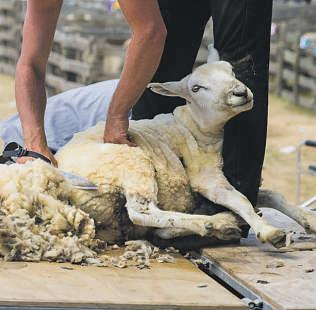
Q3: How can employers get involved in apprenticeships?
In New Zealand, an apprenticeship involves three parties: the employer, the employee, and the Industry Training Organisation, also known as an ITO. ITOs serve as invaluable guides, providing support and resources to both employers and apprentices throughout the apprenticeship journey. For those in the agricultural and horticultural sectors, Primary ITO is the dedicated partner.
Once an employer and employee agree to move forward with an apprenticeship, they should contact Primary ITO to gather information, learn the criteria and discuss options. A local ITO training adviser will visit the business to discuss goals of the
The key difference between employing an apprentice compared to a regular worker is the training plan. Every apprentice should have a training plan in addition to their employment agreement.
This plan is like a roadmap for the apprenticeship, outlining the specific learning objectives, qualifications to be achieved, timelines, training methods, and assessment criteria. It must be agreed and signed by the employer, apprentice and ITO.
The ITO will deliver off-site training and the employer must give their apprentice adequate time off to attend. On-the-job training will be supervised by the employer.
Q5: What advice would you give to a business owner wanting to employ an apprentice?
If you’re thinking of hiring an apprentice, ensure you do extensive research first. Engage in meaningful discussions with your employees about their career goals and upskilling aspirations before agreeing to sign up to support them.
Apprenticeships typically span three to four years Assess whether this commitment aligns with your business’ long-term goals and resource allocation.

• ConcreteWater/Feed Troughs
• Precast Panels • Silage Pits
• WaterTanks • Pivot Bridges
• EffluentTanks
• Concrete Bunkers • Weeping Walls
• OffalPit Covers • CulvertEnds
• KillingSheds



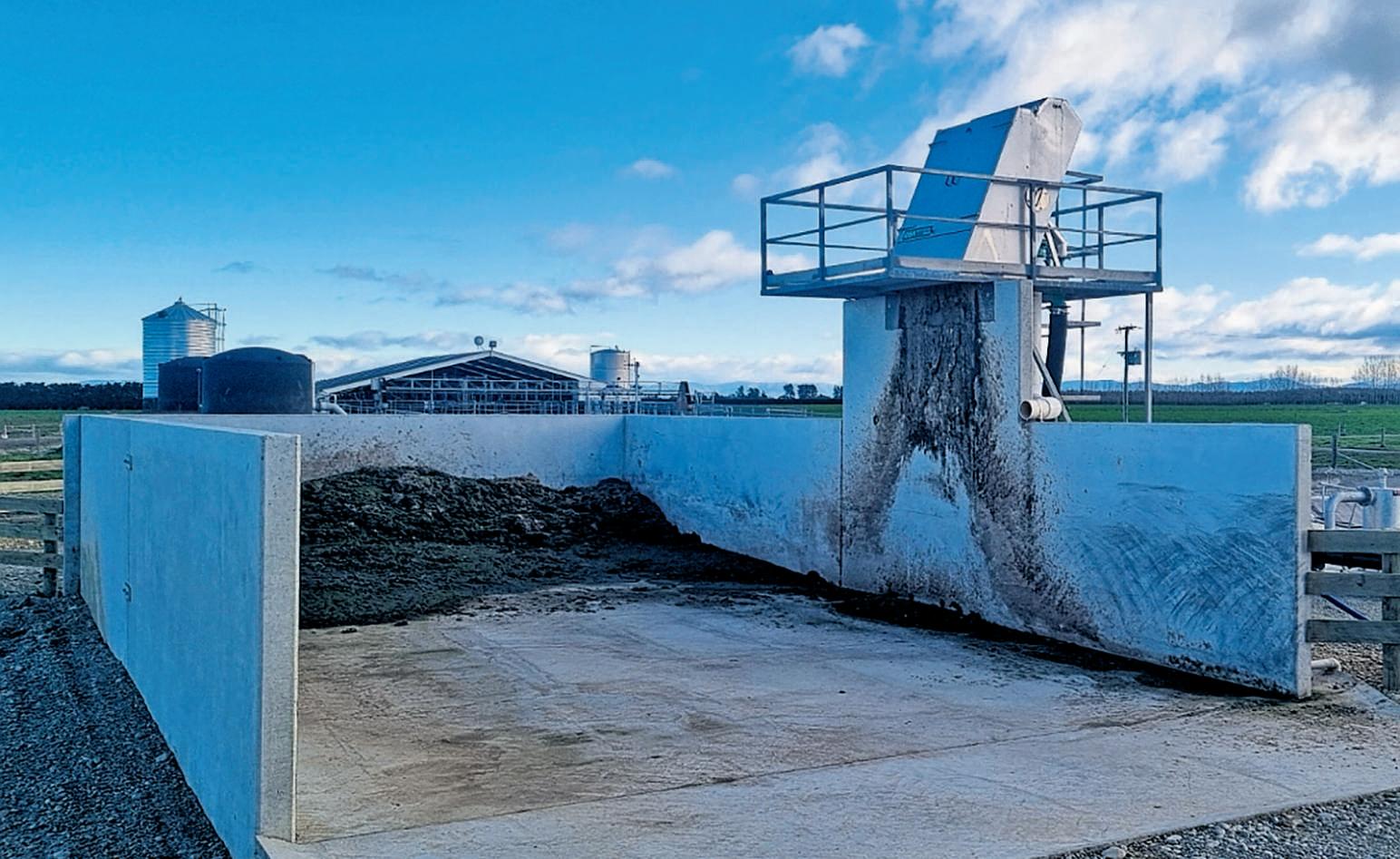

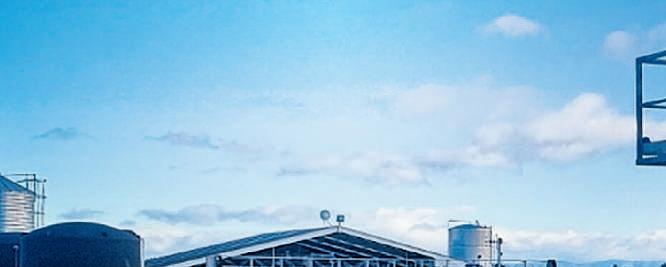









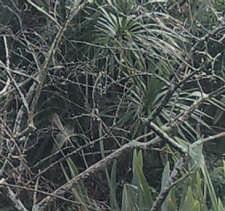






Kaiwaka couple Tania Dropulich and Innes Anderson are encouraging fellow sheep, beef and dairy farmers to partner with Kaipara Moana Remediation and give the environment a boost.
Together, they run a 211-hectare dairy farm milking 500 cows, alongside a 250ha sheep and beef unit where they finish 200 dairy-beef cross annually, along with 500 lambs. This includes leased land.
Their farm already had 80ha of pristine native bush but they want to do more to develop pockets of natives and enhance wetlands.
When they decided to retire their cut-over pine block and restore it back into permanent indigenous forest, they recognised they needed help.
Teaming up with Kaipara Moana Remediation (KMR) and The Forest Bridge Trust (TFBT), the journey on their Fonterra dairy farm is now under way.
Much of their recently harvested, small pine block is highly erodible and steep.
As a result, any sediment generated from this site during high rainfall events can impact the adjacent Cook Creek that flows down to the Hakaru River, which then flows into the Topuni River, the Ōruawharo River and then into the Kaipara Moana.
They also plan to restore two wetlands on their property and are grateful for the support from KMR, TFBT and Fonterra to bring their restoration project to life, simply because they weren’t sure where to start or what projects to prioritise.
“I would definitely encourage farmers to get on board with KMR and make the time and effort,” says Anderson.
He also says they are passionate in their leaning towards nature.
“Doing this work fits with ourvalues and we were struggling to do it on our own. It is really hard to get it up and


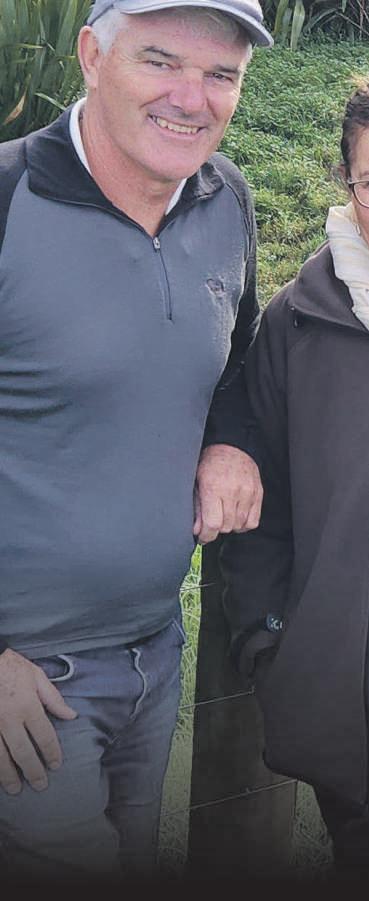

“ We have always been interested in conservation, so this has always been a desire of ours and it fits in with the Fonterra environmental plans.
Innes Anderson
running on your own. But there is so much expertise and so many groups and funding options out there – and everybody is talking to each other and collaborating.
“We have always been interested in conservation, so this has always been a desire of ours and it fits with the Fonterra environmental plans. We hope that if people can see us putting this kind of energy into the farm, then it might inspire others to do the same.”
The project is a collaboration with Fonterra sustainable dairy adviser Ben Herbert, who has supported Dropulich and Anderson to secure a KMR fencing grant.
TFBT field adviser Angela Parkin, with additional expertise from KMR’s planting specialist Dave McDermott, has helped create the Sediment Reduction Plan outlining the actions needed to assist the natural native regeneration of the cutover pine block, along with the wetland restoration.
Competing daily priorities on-farm make it a challenge for them to take action as they would ultimately like to. However, with access to expertise and grants, they



Steve Macmillan.
A Northland couple are planting more natives and restoring wetlands as they do their bit for the environment. By

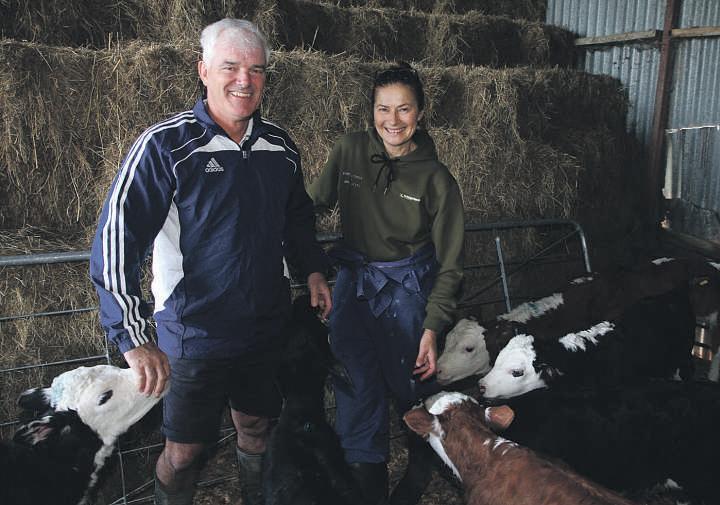

feel supported and empowered to play their part to “do the right thing” to reduce sediment entering those waterways which ultimately impact the Kaipara Moana.
Of the 265ha of land they own, 3.87ha has been retired and is being restored –3.04ha of eroding cut-over pine block and 0.83ha wetland and riparian margin.
Now that 1.1km of fencing has been put in, almost 5000 native plants will be put in the ground in the winter of 2024 in partnership with KMR and TFFT and with
ongoing support from Fonterra. They hope more planting will be undertaken in 2025.
For Anderson and Dropulich, this is just the start of their journey and they are adamant that much more is possible.
“This area of land is incredibly special to us and the Brynderwyn Range is a highly significant area, so we want to





















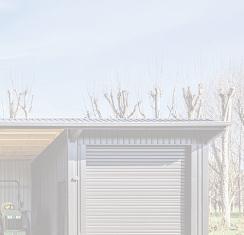




















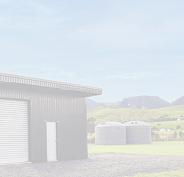











Connie Maraki lives by the philosophy that if you want something, you’ve got to rise to the challenge. She is now in her happy place amidst her menagerie of beloved dogs, horses, sheep and chickens in Rerewhakaaitu. By
Anna Brankin
.
After a life that has included solo parenting, learning how to shepherd and weathering the sudden loss of her husband, Connie Maraki has never been one to shy away from hard work. The 71-year-old has tried her hand at just about everything
“I always had a point to prove – that women can do anything,” she says
“That’s just how I’ve always been.”
Born and raised in Te Awa Kairangi ki Uta Upper Hutt, as a child she would look to the paddocks of sheep and horses across the road and dream of a different life. She’d climb the fence to ride the local draughthorse and befriend the neighbourhood dogs “I’ve always loved animals,” she says
In later years, Maraki has come to realise that, in many ways, she and her mother were cut from the same cloth. As a teenager, however, she chafed against her mother’s strict rules and expectations.
“I used to have to sit at the table on the back porch, on the concrete floor, doing homework until 10 o’clock at night,” she says
“Then she enrolled me in a shorthand typing class Well, I couldn’t spell to save myself! I reckon I was a bit dyslexic.”
Over the next few years, she scrambled to find her feet. She trained as a hairdresser while working as a Mobil hostess, pumping petrol in a miniskirt.
She worked as a postie, and took a job at General Motors, working in new car conditioning and later in the spray paint department.
It was during this time that she married for the first time. Although the marriage itself was short-lived, it led to the birth of her son, Grant, and she says that made it all worth it.
Her next relationship took her to Ruatōria, and when it ended she suddenly found herself in the middle of nowhere with a young child.
“So I went shepherding,” Maraki says matter-of-factly. “I loved dogs, and I loved horses, so I got myself a dog. I got given this and that, and off I went.”
When Grant was about 5, they boarded with a couple who would help out with childcare when Maraki was at work. Shepherding was a totally new challenge, but she was determined to make it work.
“The East Coast country is real rugged, it’s pretty up and down Sometimes I’d muster a paddock and the head shepherd would say, ‘There’s a mushroom in that paddock over there. You missed one’,” she says.

When she was 16, Maraki left home.
“For a while I was a street kid. I remember the Wahine storm of 1968 – I was sleeping in a post office in Lower Hutt because I had nowhere else to go.”
“Because he could see the white thing sitting in the paddock, you know. So I’d have to go back and get that one sheep, which was not easy. But I got the job done.”

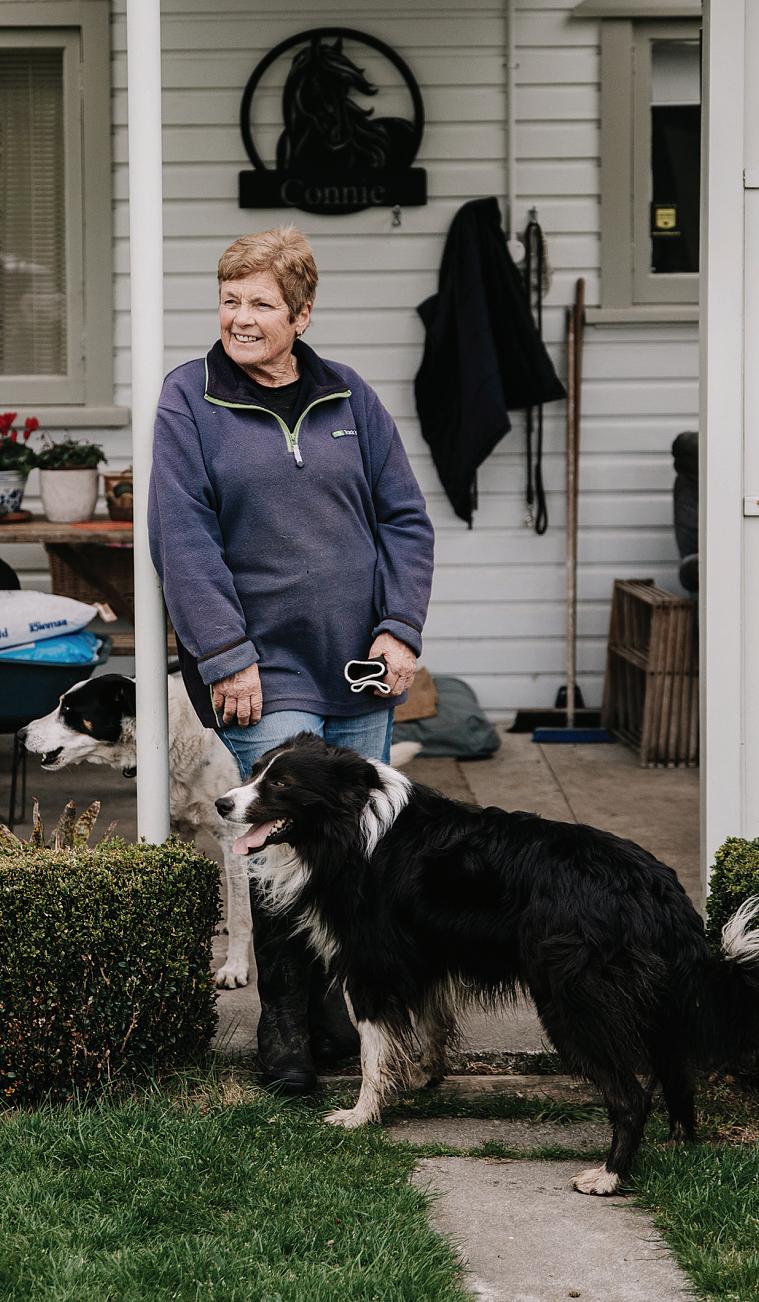
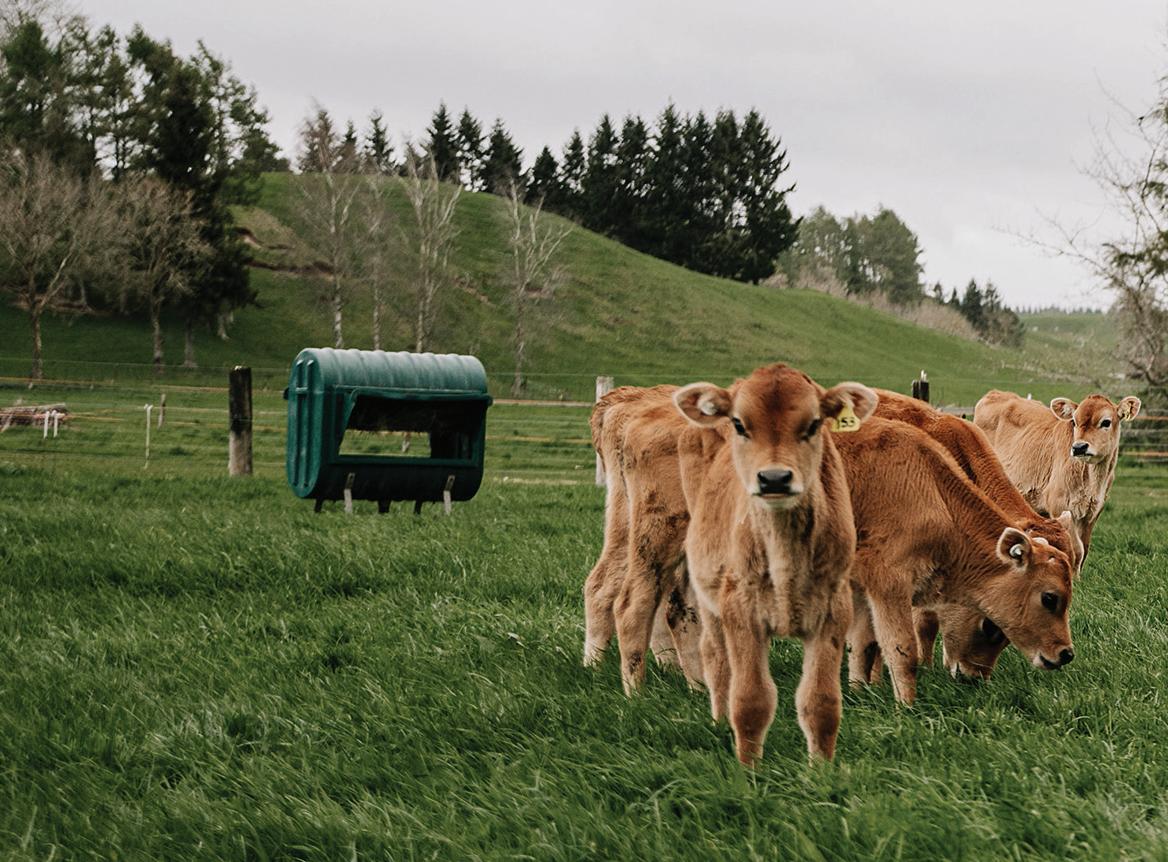
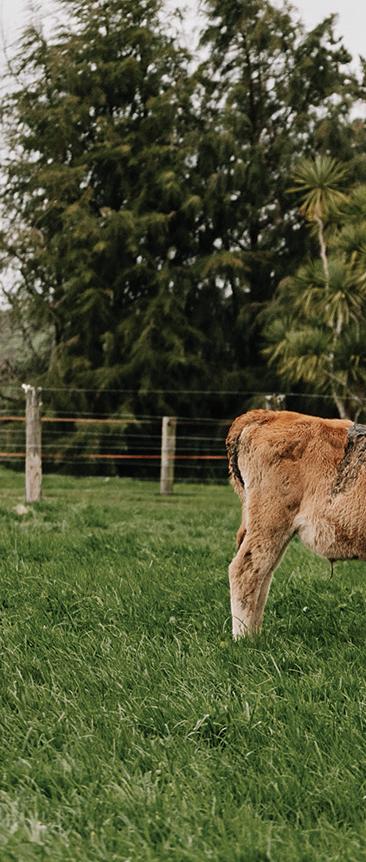
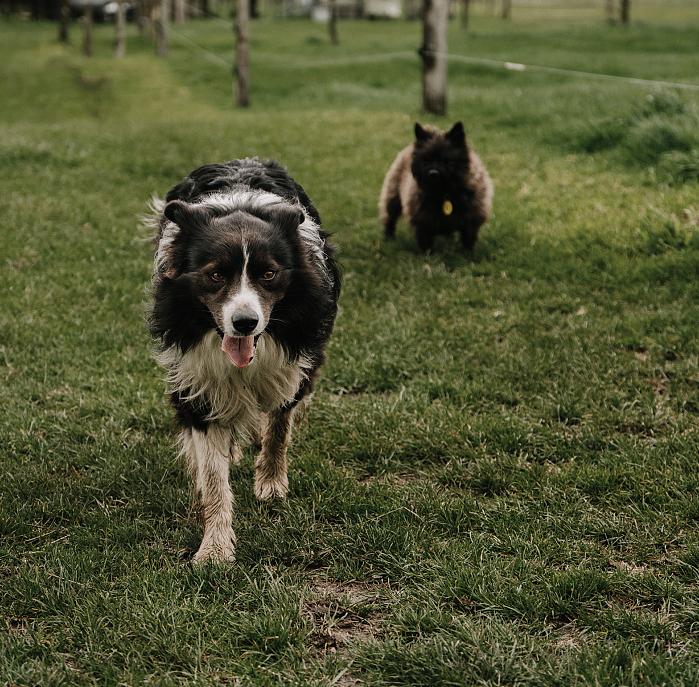
Maraki’s second son, Conway, was born while they were living in Rotorua.
“I was helping on the farm as well as looking after him. I’d go and dag sheep and all the rest of it, and my son would be asleep on the dags of all places,” she says.
“He’d just go to sleep wherever.”
And then there were the horses. Connie and Pine got their first Appaloosa – a mare – while they were living in Rotorua, and about a year later they took on a colt as well. They moved back to the East Coast around this time, to Tikitiki.
“We went to the Poverty Bay A&P Show and we showed them, and that’s how it all started. We met up with people who were into Western riding, and we went for lessons,” Maraki says. “Before that, we were just riding horses up and down the road and mustering, we didn’t know anything.”
Connie and Pine left the East Coast and moved back to Rotorua in the mid-80s and farmed for Tumunui Lands Trust on their deer farm and then dry stock, until it converted to dairy in the early 90s.
She worked as a vet nurse for six years. They had a good marriage, characterised by an ability to work hard and enjoyment of their shared hobbies.
terms with a very different vision of her future.
“There I was, on my own. I had no job at the time because it was March and I wasn’t due to start rearing calves until August. I was lucky the farm owners let me stay on in the house and gave me some work as a relief milker.”
Maraki was determined to find a property she could settle down on and have some security for the next stage of her life.
“We had horses and untold dogs, we had the carafloat and a Bedford JO, which was Pine’s pride and joy,” she says. “I started selling what I could, getting a four-wheeldrive and a smaller float. And I found out from the bank how much I could borrow.”
In May 2000, 16 months after Pine’s death, Maraki completed her mission.
The house she found was in disrepair and there was no grass on the property, just barberry hedge and broom with a sheep track around the outside, but Maraki could see the potential. She stayed on the farm to begin with and worked on the property in her spare time, finally moving in a year later.
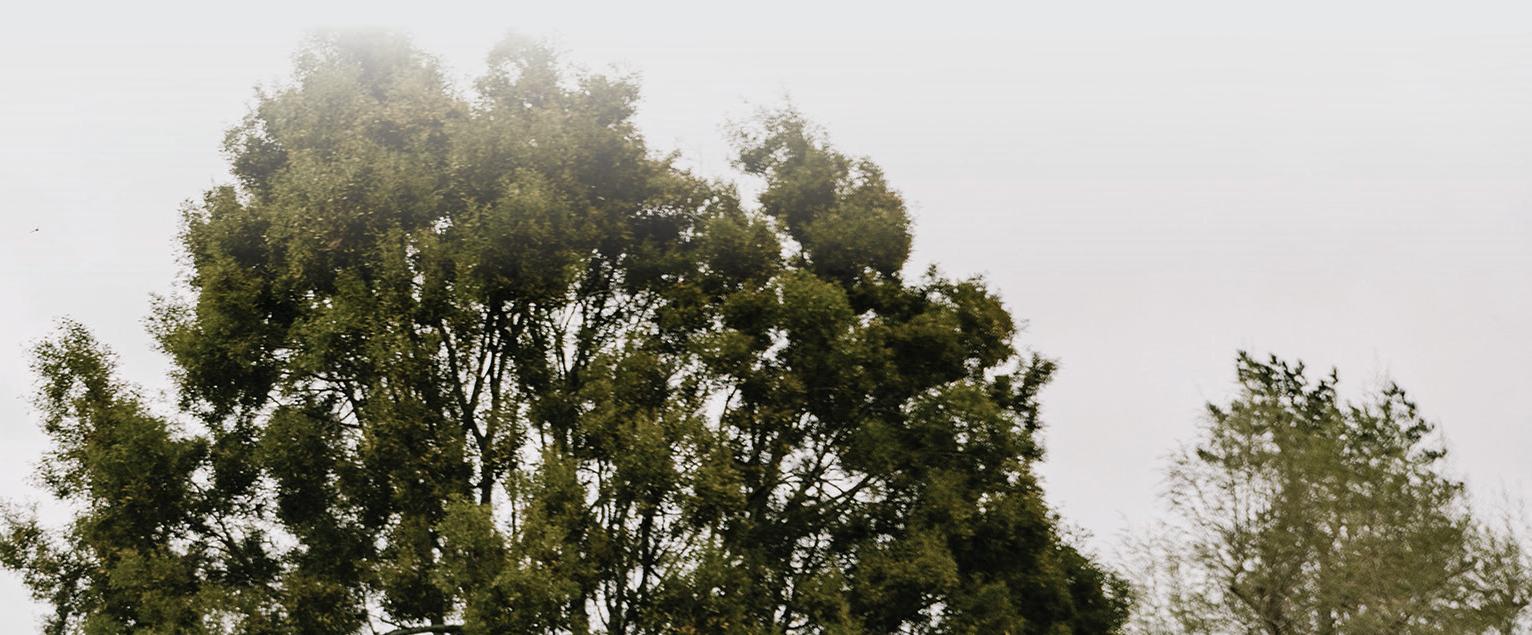
long
until she was married to the same head shepherd.
“He respected me and treated me well, and he was always very encouraging. He had a lot of aroha and a beautiful heart.”
Pine Maraki was Ngāti Porou and had lived and worked in the Ruatōria area for most of his life. Shortly after they were married, they made the decision to move.
“We moved up to Rotorua, and went farming on a Māori land block at Wharenui owned by Ngāti Whakaue,” Maraki says.
“It was a sheep farm, Drysdales, and I remember one of my jobs was taking the rams up the road and back again, just to keep their feet in trim.”
The head shepherd at Wharenui was an experienced dog trialler, and he encouraged her to pursue trialling.
“We used to take the sheep up the shed in a big mob, and then we came to a particular place and we’d put them up the hill three at a time. That’s how we’d train the huntaways.
“He had a pen back at his house and that’s where we’d train the heading dogs, putting them on the rope and teaching them their lefts and their rights.”
“We never had anything, but we got places, we did things. We went all over the place horse-showing. We took the kids with us, and had bacon and egg pies for lunch. That was our social life.”
Looking back, she is glad that they took that approach. “We didn’t own a home or any land, but if we hadn’t done it then, we wouldn’t have had that time together.”
In 1999, the kids had moved out and Connie and Pine were living and working on a dairy farm at Tumunui. Everything was normal.
“It was like five o’clock one morning and I was sound asleep at home when there was a knock at the door. It was the farm owners,” she says. “They said, ‘Something’s happened to Pine. He’s gone.’ I said, ‘What do you mean, he’s gone?’ I remember those words so clearly.”
Pine had been getting the cows in for milking when his bike went backwards down an 85-metre hill. He had celebrated his 49th birthday just the day before.
“I had actually been having a dream of him just before that knock on the door.
“I’ve just worked on farms in the area all the way up until I retired. And I’m still working now, but I’m just looking after some stock, moving them every couple of days and checking the water.”
Rerewhakaaitu is a small and closeknit community. Maraki’s old bosses still keep an eye out for her, and she has other friends in the area.
“I’ve got a sort of adopted family, a young couple whose kids I’ve looked after since they were little. They call me Aunty Nan,” she says. “I have a friend who just lost her husband, and I said to her, ‘You’ll have your moments for years, but it slowly gets better. You’ve just got to remember what they would want you to do. They wouldn’t want you sitting around sulking They’d want you doing something you enjoy, living life’.
“My new motto is ‘use it or lose it’ – I’ve got to do it today because there mightn’t be a tomorrow.”

“He was walking and he was waving, and I never thought of it until later, but he was waving goodbye to me.”
After 22 years, Maraki had to come to

Connie Maraki’s story was originally published in Shepherdess magazine. For more stories of inspiring women in provincial Aotearoa New Zealand,visit shepherdess.co.nz. Takurua Winter Edition out now – stocked in dairies, supermarkets and boutique design stores nationwide.
The ColliersRural &Agribusiness team have strengthened their broad base of expertise with acollection of new rural sales advisorsjoining the organisation recently.
With the arrival of the newteam members, Colliersnow hasa72-strong Rural & Agribusiness team across New Zealand.
Inthe Waikato and BayofPlenty regions, Grant Pedersen has begun as arural sales adviserbased out of Matamata, and Don Skidmore has joined as arural and agribusinesssalesadviser in the Tauranga office.
In Hawke’s Bay,Tracy Masonand Jeremy Klingender have joined as rural sales advisers, alongside Darren vanDeventer,the new general manager of Commercial &Rural Headingtothe SouthIsland, Ross Robertson (NorthOtago)and Shane Spiers (South Canterbury)havebegun as rural and lifestyle sales advisers.
Mark Wilson has joined the team in the deep south and will be based out of Gore, marking anew area where Colliers will now have apresence.
James Nilsson, national director of Rural & Agribusiness at Colliers, says the new team members will bringvaluable experience to theirlocal markets.
“Our new rural sales advisers allhave dedicated expertiseand strong connections to where they arebased that have been forged across many years,” Nilsson says
“These are peoplewho are deeply committedtoprovidingthe best possible advice to theirclientsand we welcome their collective knowledge andexpertiseto Colliers.”
Since being formed in 2014,the Colliers Rural &Agribusiness team have continued to grow and nowservice amajority of markets across the country covering allaspects of the rural, agribusiness and lifestylesectors
Recently, theteam gathered in Christchurchfor theirNational Rural Conference, wherethe themewas ‘Regeneration –lookingforward and beyond’ and included insights from anumber of industry experts.
While therural sectorhas facedchallenges during the past 18 months due to the long tail ofthe Covid-19 pandemic and extreme

weather events that hit thecountry at the start of 2023, thereisoptimism forthe future.
Forecasters are predicting acut to the Official Cash Rate from the Reserve Bank of New Zealand could come before the endof the year,which may provide confidence to the sector.
“Looking at the improvementinsentiment from heartland New Zealand, the markets, inflation, and interest rates starting to come down,we’re starting to see signs of more activity in volumes of properties comingto market,” Nilsson says.
“Oncesentiment starts changing for the better,we’ll see more confidence goinginto spring and this is when we typically see the largervolumes of sales occurring.”
Despite the backdrop of achallenging
Despite challenging market conditions over thepast 18 months, there are signs of positivity in therural sales sector.
market over the past 18 months,deals have still been takingplace andNilsson points to some recent examplesoftransactions brokered by Colliers as to what is catching the eyeofbuyers.
Recent deals include asignificant36.5ha horticultural propertyinHawke’s Baythat was sold by rural sales adviserLouise Wake, while there was also athree-bedroom lifestyle propertyinTealValleyinthe Tasman region setona 32.68ha landholding that was sold by Nelson-based team members Scott Healey andGeoffFaulkner.
“Quality listings are still drawinginterest among buyers andthathas not changed. Strategic purchasers have made some savvyacquisitionsinrecentmonths,” Nilsson says.
Astunninglifestyle property with an adjoiningcherry orchard near Cromwell offers buyers the opportunitytosecurean expansive home that also providespassive income.
17 Mount Pisa Road, Mount Pisa features a cleverly designed five-bedroom home that spans 417square metres andsits on 7.6857 hectaresoffreeholdland. The propertyalso houses 3777 export-qualitycherry trees.
The orchard is managedby45South Cherries andall produce is sold through the 45 Southpackhouse,meaning the newowner canhaveasmuchoraslittle involvement as they like, providing considerable flexibility.
The main area of the home includes spacious open plan living with afeature schist fireplace, three bedrooms andtwo bathrooms. Themaster bedroom hasalarge ensuite and walk-in wardrobe.
There is another separatewingwith lockable internal access that has an additional two bedrooms withensuites and aseparate open plan andself-contained kitchen, living and diningunit, and its own internally accessed single-car garage. This offers self-contained accommodationfor additional income or is perfect forlarger, extended families, particularly with its singlelevel layout.

With beautifully landscaped grounds, including usingone of the pondsasaclever water feature, and expansive views of the Pisa mountain range, this is aproperty that captivates.
It is well positionedtoafullrange of services andamenities beingonly10minutes from the thrivingCromwelltownship.
Recreational pursuits are on itsdoorstep, makingitsuitablefor those seeking to enjoy the activities that Central Otago has on offer.
The area is characterised by the lowest levelsofrainfallinNew Zealand regardless of season. It also has low humidity, agood number of sunshinehours, and consistent weather systemswithhot,dry summers and cold, frosty winters.
Colliers rural sales advisers Ruth Hodges and Mike Eyles are marketingthe property
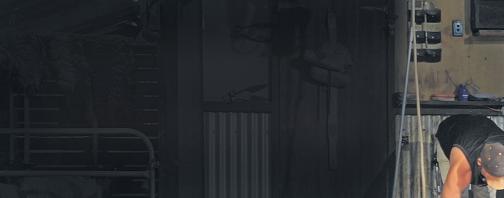

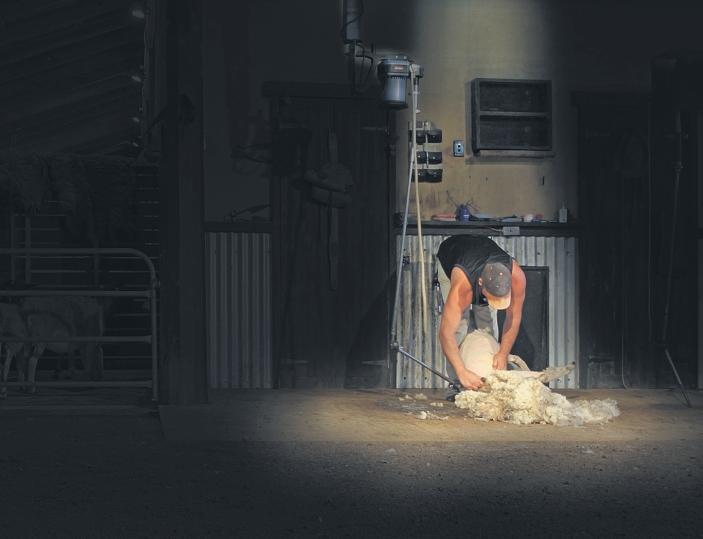
vianegotiation.
17MountPisaRoad, MountPisafeatures afive-bedroom homeon7.6857ha offreeholdland thatalsohouses 3777export-quality cherrytrees.
The orchard was planted in approximately 2009 and is comprised of Lapin,Staccato, Sweetheart and Celeste cherryvarieties, with approximately 7ha in totalunder canopy consisting of 3777 export-quality trees. This is made up of 882 Lapin, 1347 Sweetheart, 1520 Staccato and 28 Celestetrees.
The orchard is fullycoveredwith bird netting, planted at 4.8m rows with 3m plant spacing.
The harvest timingfor theStaccatos is around mid-January through to midFebruary, with theSweethearts harvested around earlyJanuary throughtolate January.
Hodges, directorofColliers Rural & Agribusiness in Otagoand Southland, says given the property can be configuredin multiple ways, prospectivepurchasers will

•Industry leading safetyfeatures to keep your workerssafe
•Includes new indicator with audible&visible alarms
have considerable options at their disposal.
“This top-quality homefeatures high stud ceilings and naturalwood andhas more than enoughroom forthe whole family. It could also be used forshort-term accommodation givenits strategic layout,” Hodges says.
“There is athree-bayshed with aconcrete padlocated south of the main home,with onebay converted forseasonal orchard worker accommodation,plus multiple external power supply options forcampers, addinganotherpotential income stream.”
Eyles, rural sales adviseratColliers Queenstown, says 45 South Cherries is one of the biggest cherry packhouses in Central Otago
“After beingformed in 1984,45South have established themselves as New Zealand’s largest grower andpacker of export cherries,” Eyles says.
“With more than 20 clientorchards in their portfolio, 45 South Cherrieshas considerable export capabilities andproduces over 30% of New Zealand’s export cherries servicing markets in China, South-East Asia, the United States andCanada
“Thesubject property sits at the foot of Mount Pisa andthis popularfruit-growing location has producedanarray of stonefruit duringthe past century andisconsidered the ideal location forgrowing cherries.”





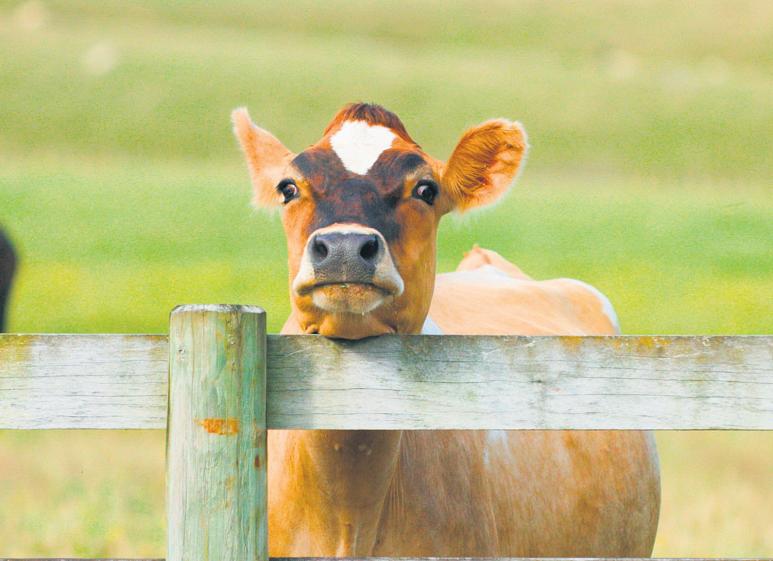


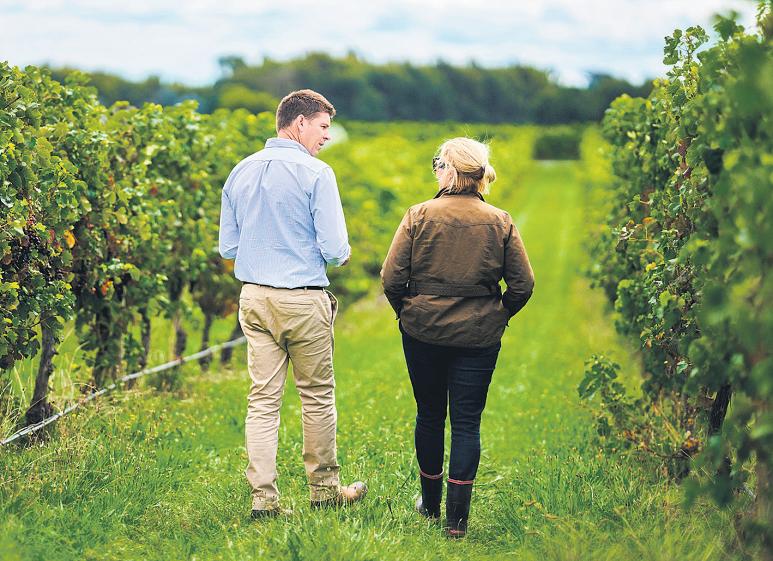
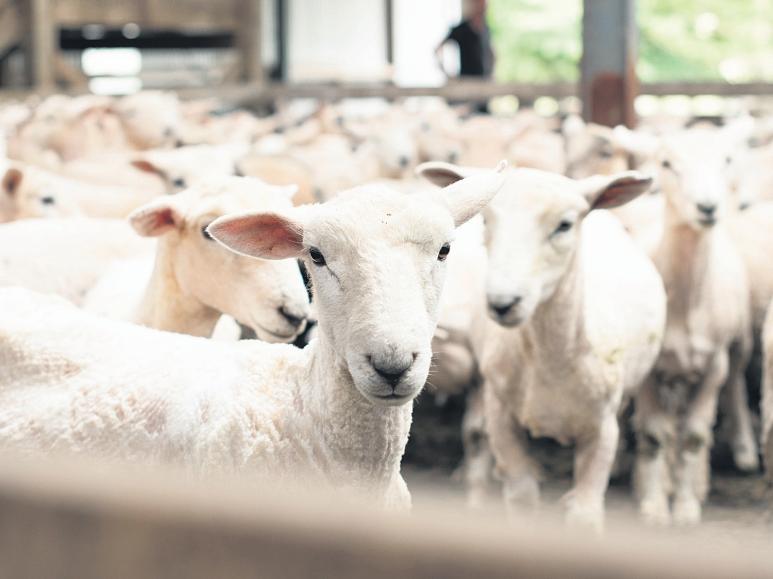





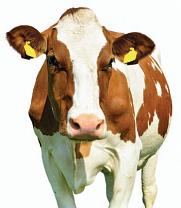





The latest report by the Red Meat Association shows demand from China is soft, but there has been positive growth in all other key markets, writes the Meat Industry Association.
All key red meat export markets, apart from China, showed positive growth during June, according to an analysis from the Meat Industry Association (MIA).
New Zealand exported red meat worth $914 million during the month – a 2% increase on June 2023.
The United States was again the largest market, with exports up 14% to $303m
There were also increases to Japan, up 53% to $61m, the United Kingdom up 66% to $53m, and Canada up 94% to $51m.
China was the second market, but fell 38% to $176m.
MIA chief executive Sirma Karapeeva said that while the China market remained soft, with some recovery expected in 2025, other key markets were seeing positive returns.
“The US was the most valuable sheepmeat market for the month. This was the first time since July 2017 that China hasn’t been the largest market by value for sheepmeat.

“Beef exports to China were also down, but overall exports remained steady due to strong demand from the US, Japan and Canada.
“These trends were also reflected in the data for the second quarter and for the year to the end of June with the value of exports down for China, but increasing to most other key markets.”
Sheepmeat exports totalled 29,829 tonnes in June, up 22% from a relatively low level last June.
New Zealand exported red meat worth $914 million during the month of June, a 2% increase on June 2023. The United States was again its largest market, with exports up 14%.
Value only increased by 8% to $294m, due to the lower value of exports China.
The US imported New Zealand sheepmeat worth $62m, with China dropping by 39% to $52m.
Beef exports increased 1% by volume to 50,907 tonnes and 3% by value to $470m.
Beef exports to China were down 44% to $83m, but exports to the US rose 16% to $221m, 101% to Japan to $46m and 112% to Canada to $35m.
Fifth quarter exports were unchanged from last year at $150m.
Results for the year
Overall exports for the 12 months to the end of June were down 7% from 2022-23
to $9.9 billion. China remained the largest market for the year, but exports were down 32% to $2.86b It accounted for 29% of all exports compared to 39% last year.
The US took 27% of total exports compared to 21% last year, with an increase of 16% to $2.66b
The next three largest markets were Japan, up 13% to $490m; the UK, up 45% to $456m; and Canada, up 58% to $370m.
Sheepmeat volumes increased by 3% to 389,509 tonnes, but the weak China market saw value fall 9% to $3.59b.
Volumes to China were down 14% to 187,970 tonnes, and the value was down 33% to $1.05b
Exports to North America and the UK increased by volume and value. Volumes to the European Union were largely unchanged, but value fell by 10%.
Beef volumes also increased by 3% to 511,736 tonnes. However, value fell by 4% to


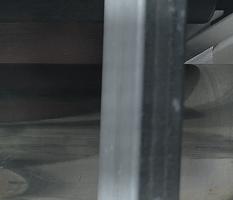

$4.42b, largely due to China, where exports were down 35% to $1.27b
This was partly offset by growth into the US, up 30% to $1.74b; Canada, up 106% to $209m; and recovery to Japan, up 27% to $328m.
The value of beef exports to the US was also significantly higher than to China. While New Zealand exported only 9000 tonnes more beef to the US compared to China during the year, the exports to the US were worth $470m more, which is highlighted by the respective free on board (FoB) value of $9.29/kg versus $7.12/kg to the two markets.
After a full year of the free trade agreement (FTA) operating, the UK was one of the top 10 beef markets for 2023-24, the ninth largest by volume at 3881 tonnes and eighth largest by value at $48m.
Fifth quarter exports were worth $1.93b for the year – down 13% from 2022-23.







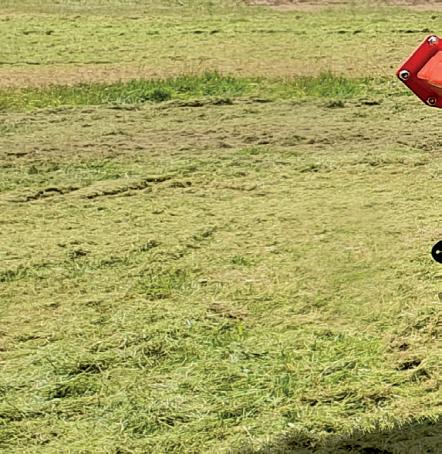

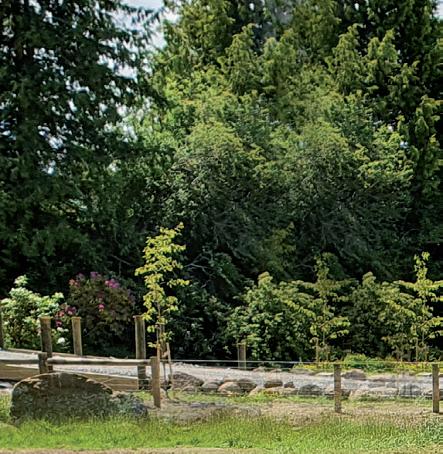
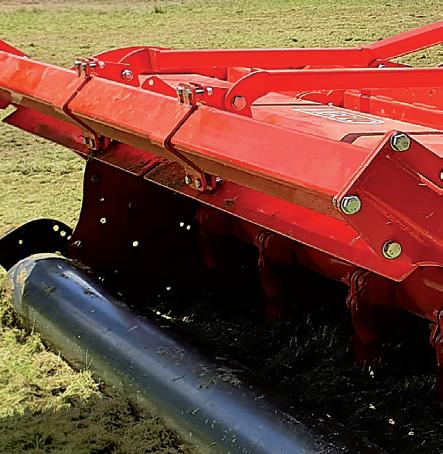



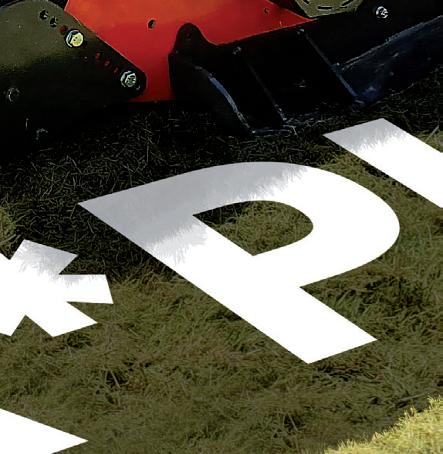

NewZealand’s toughest mulchers eatthrough gorse, scrub and smalltrees with ease.VigoloHighBodyMulchersare fullyspec’dfor NZ conditions andbuilt to last.
Solet’s cutthe cr*p anddoa deal that worksfor you.




